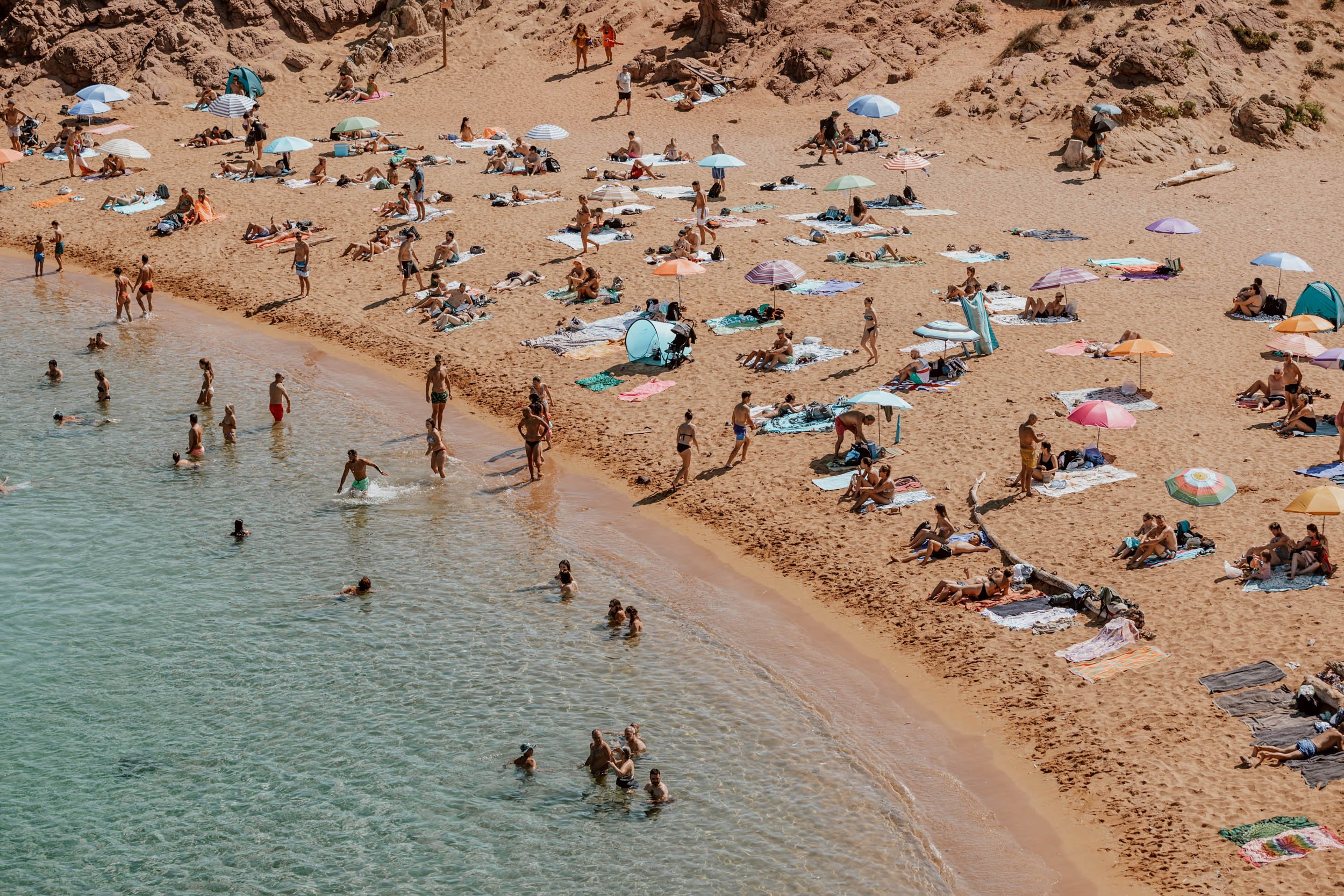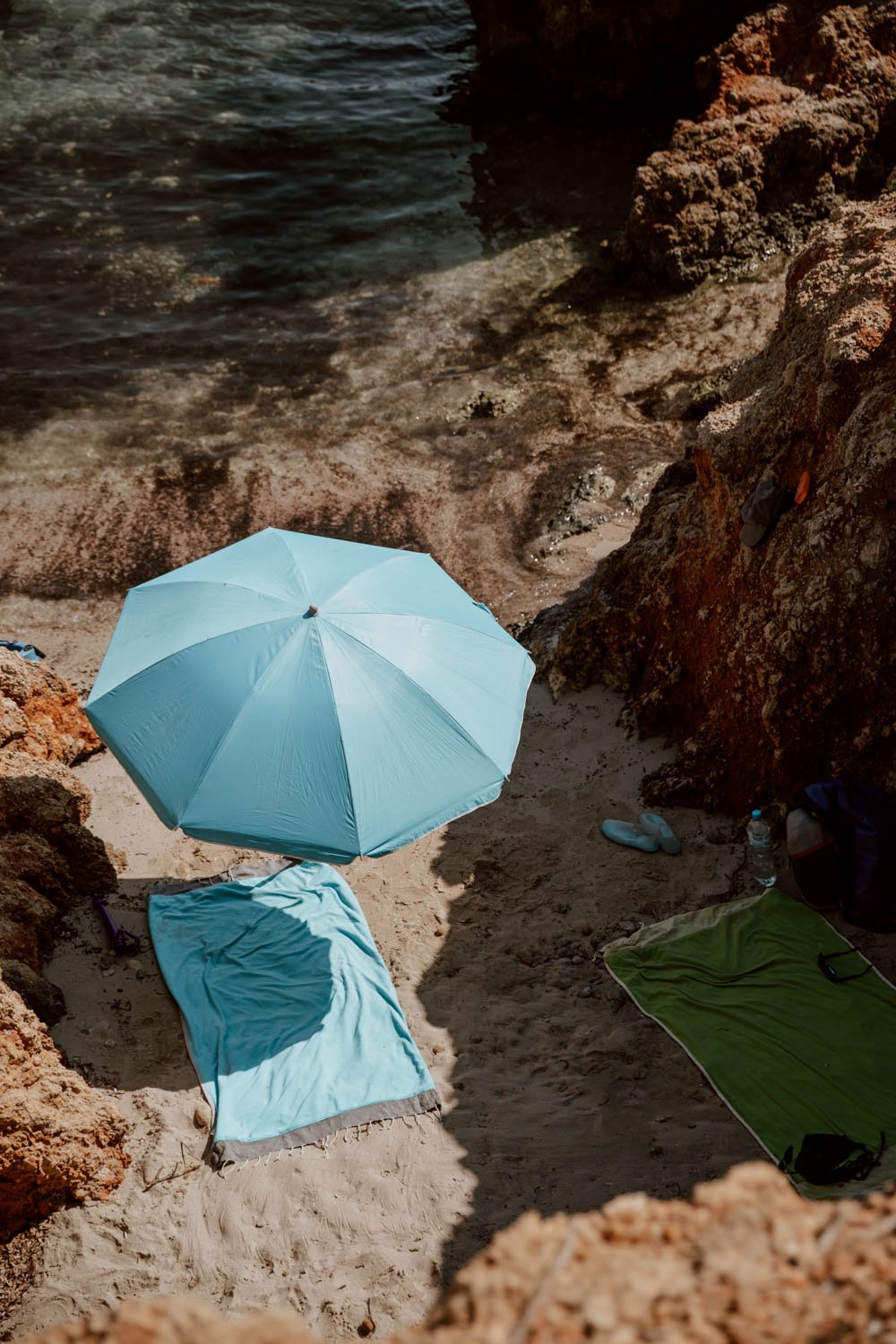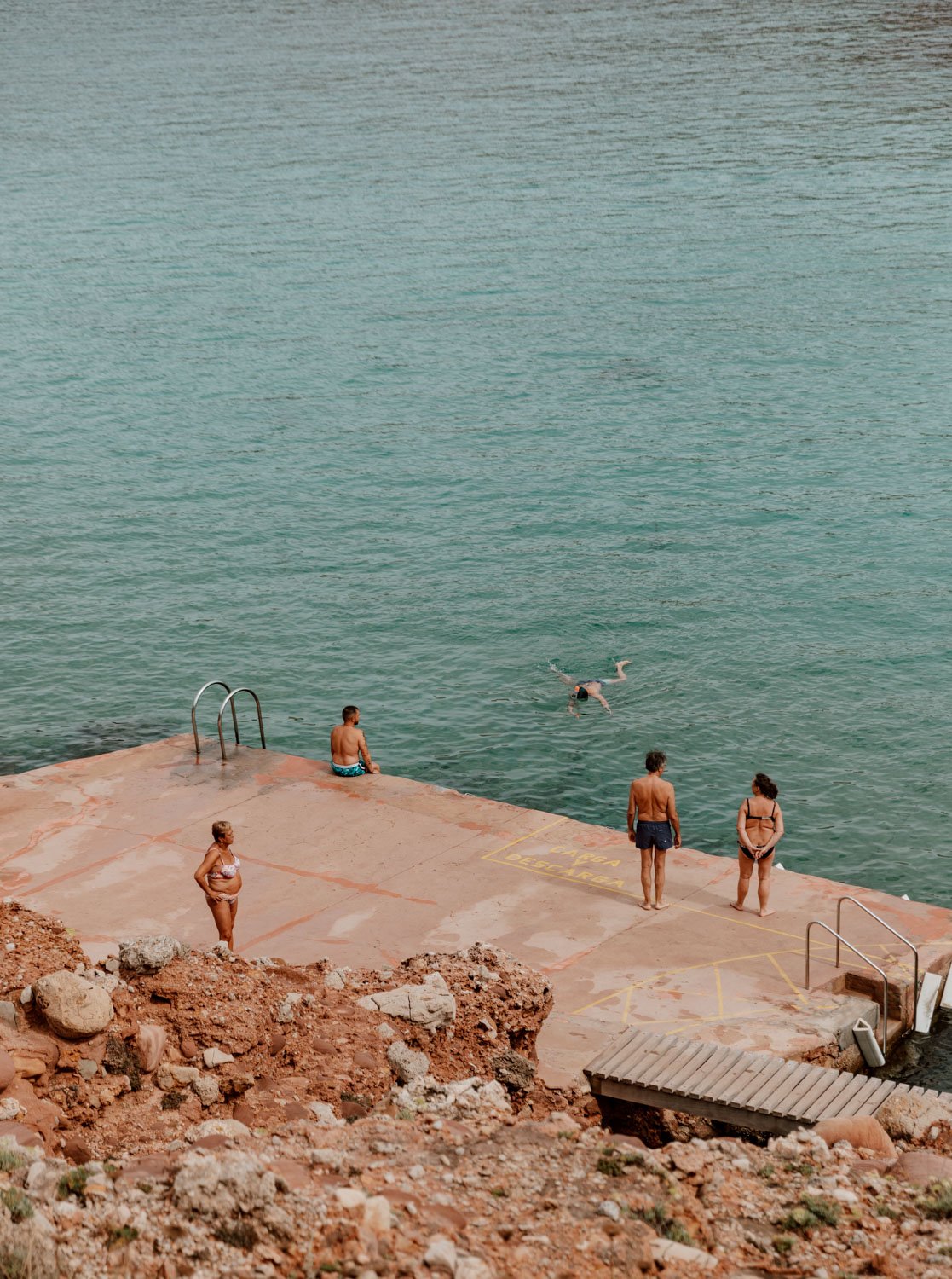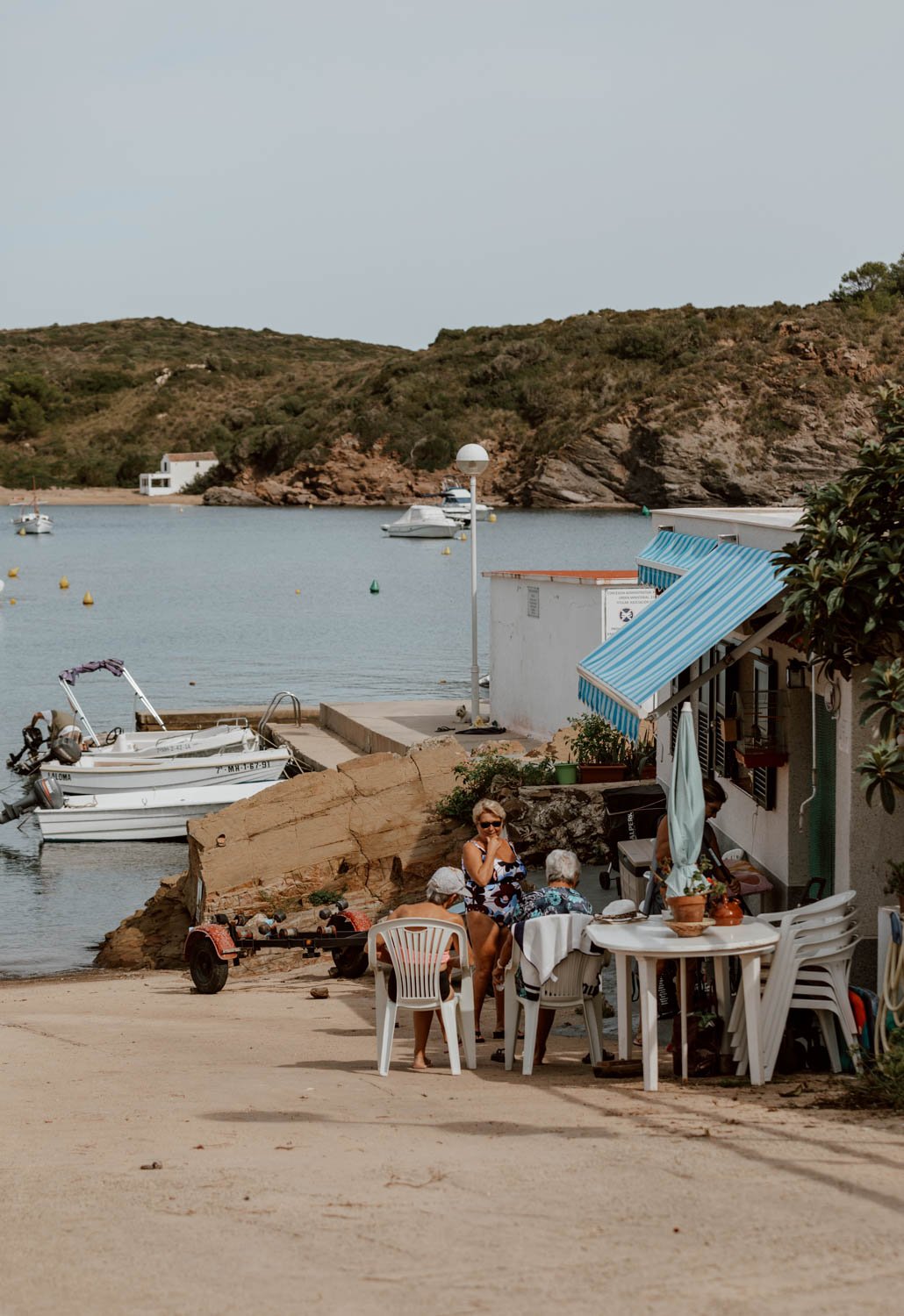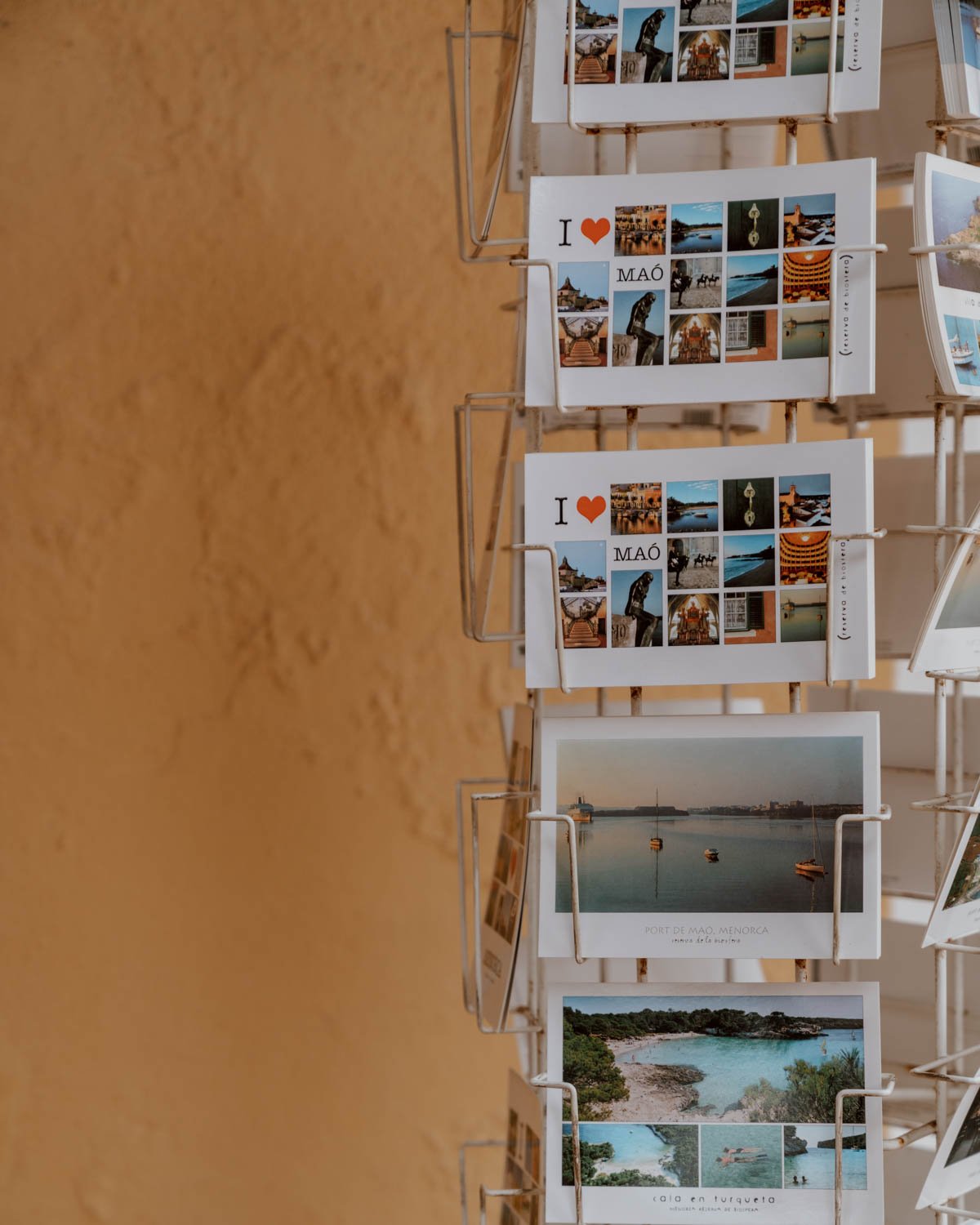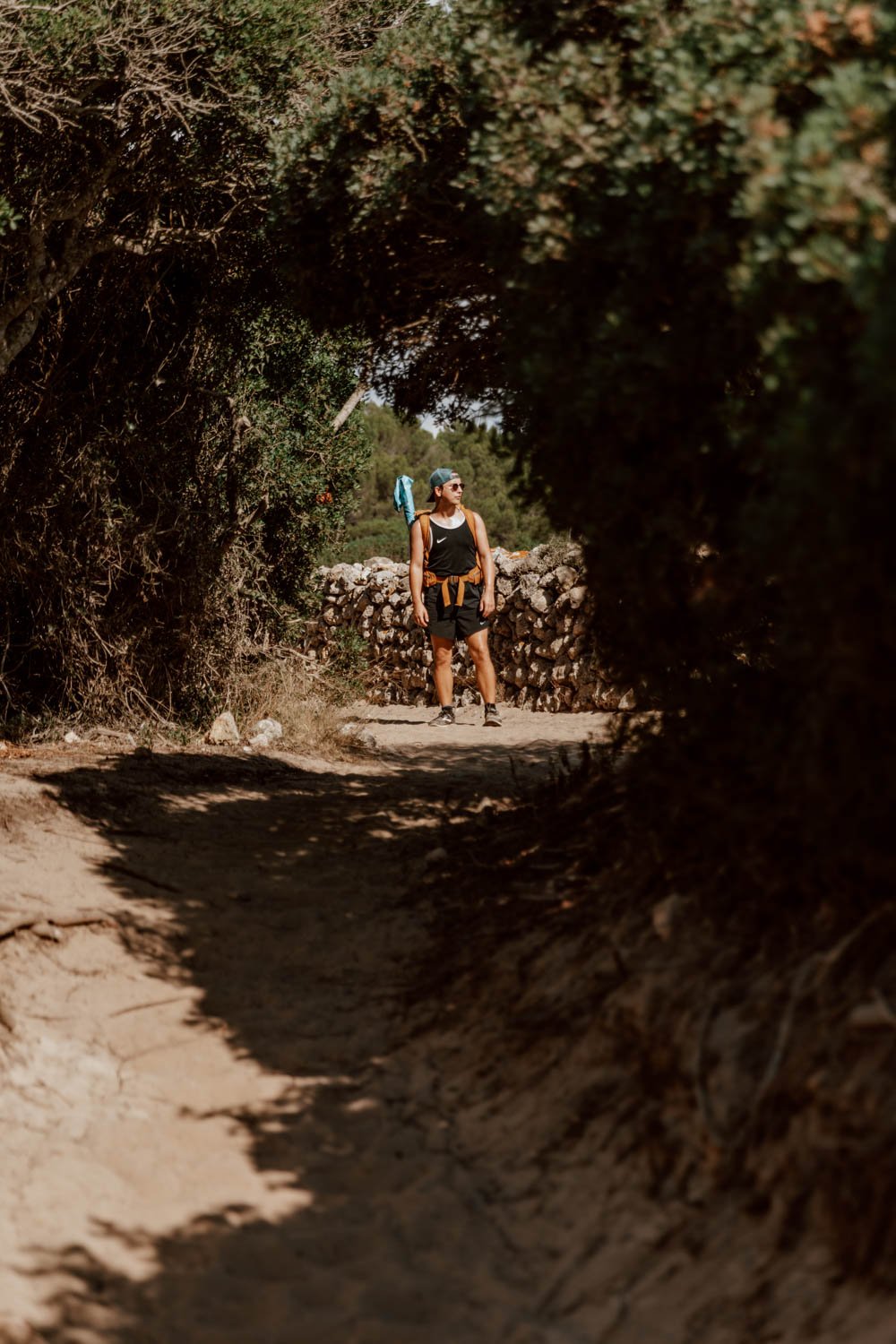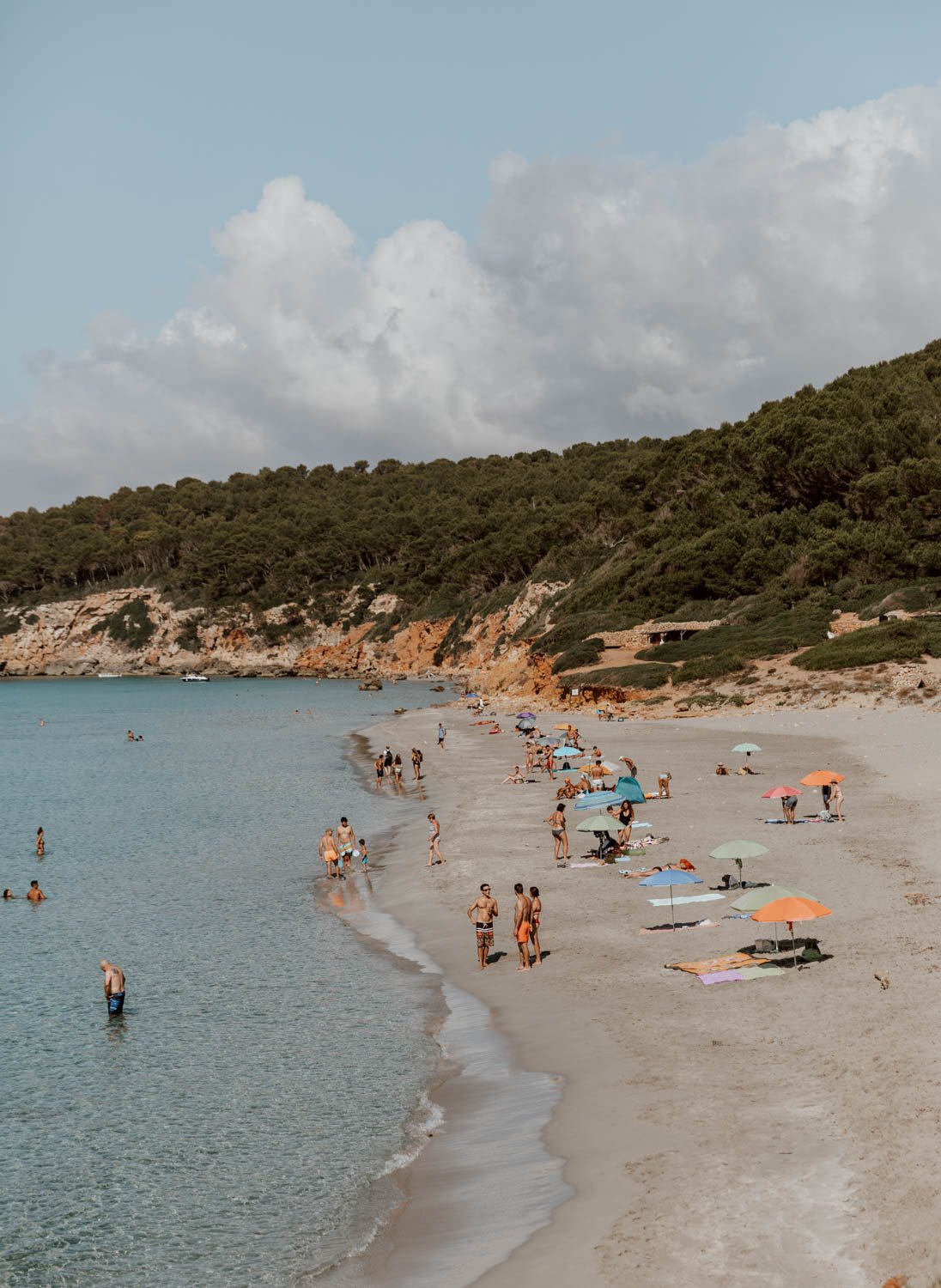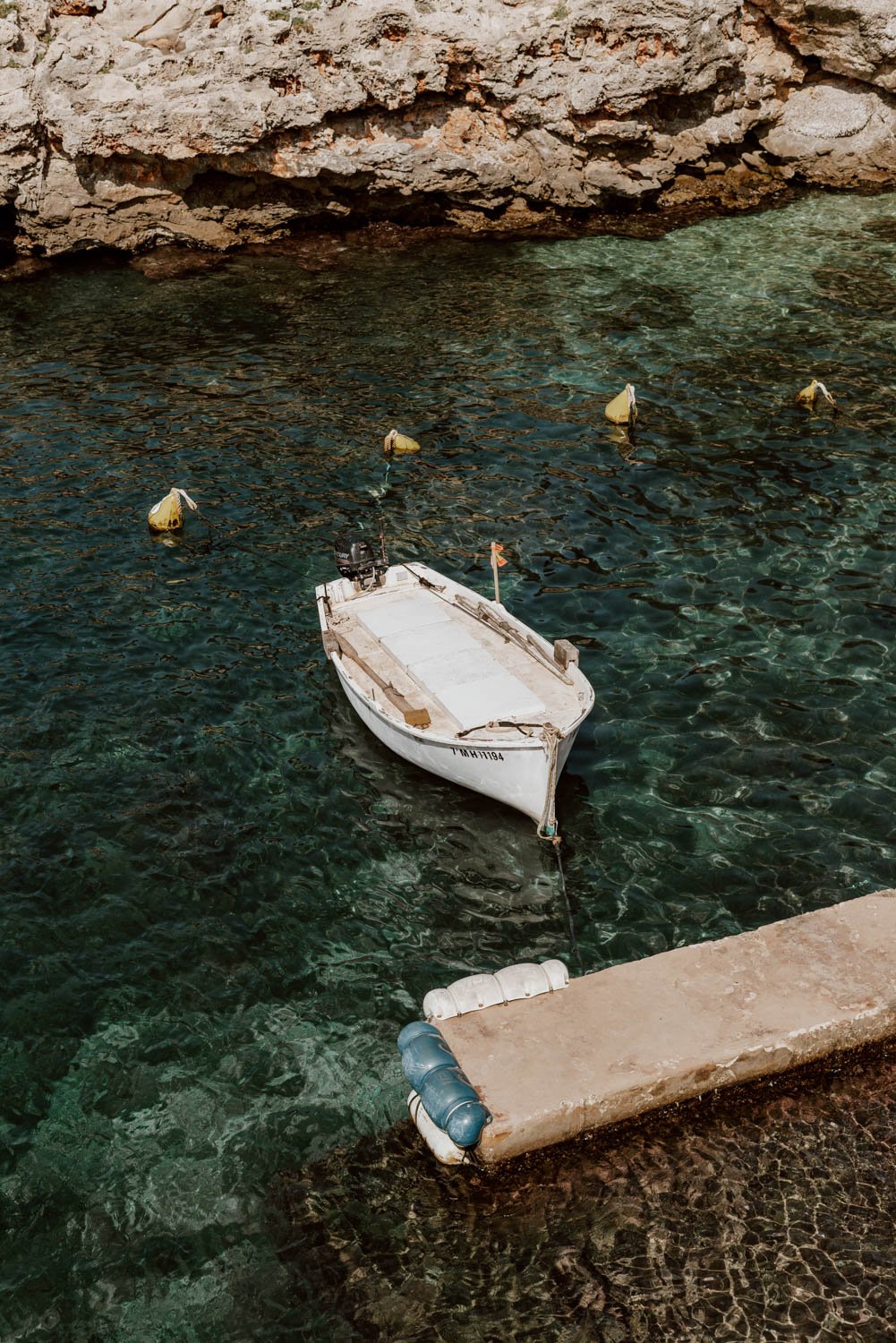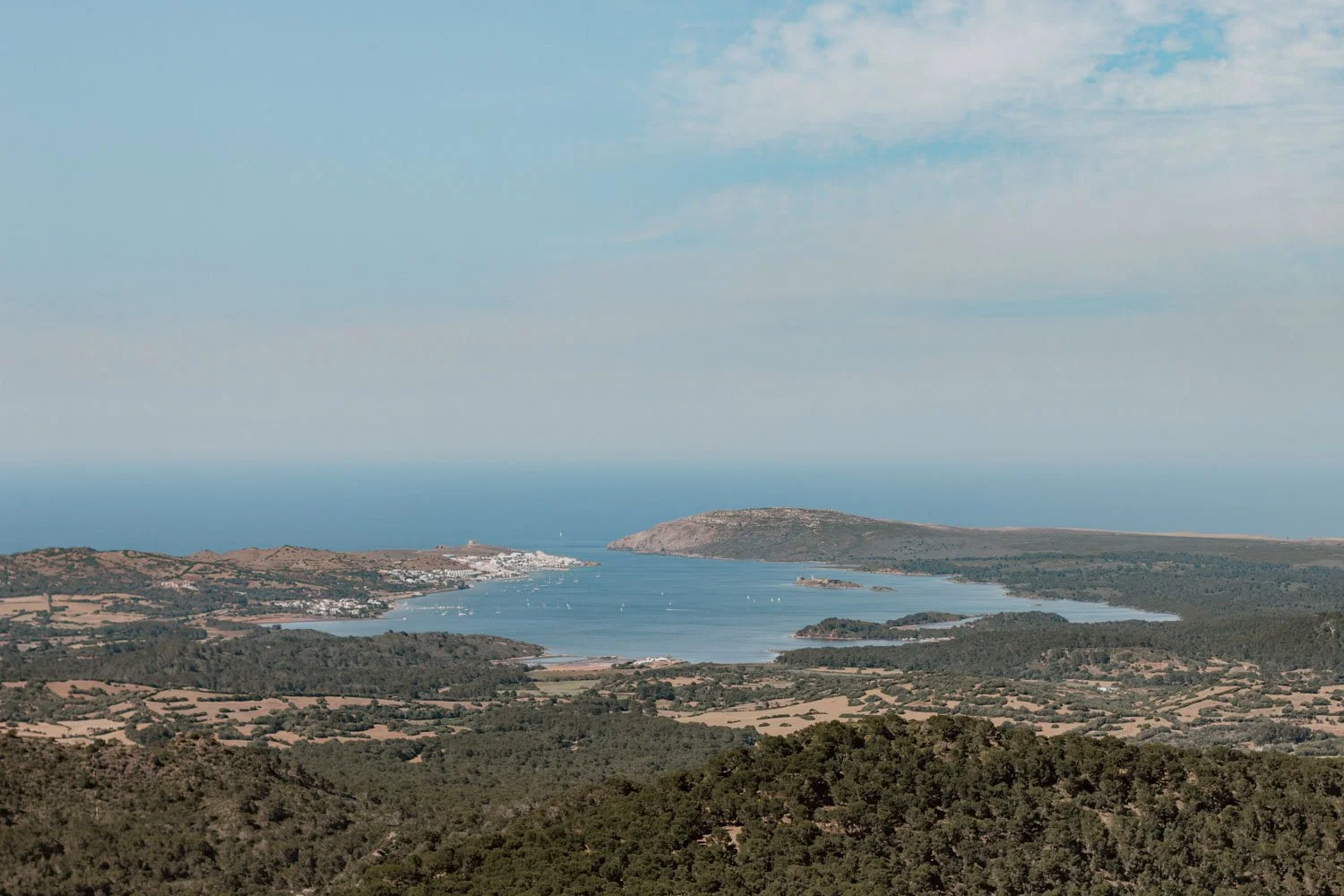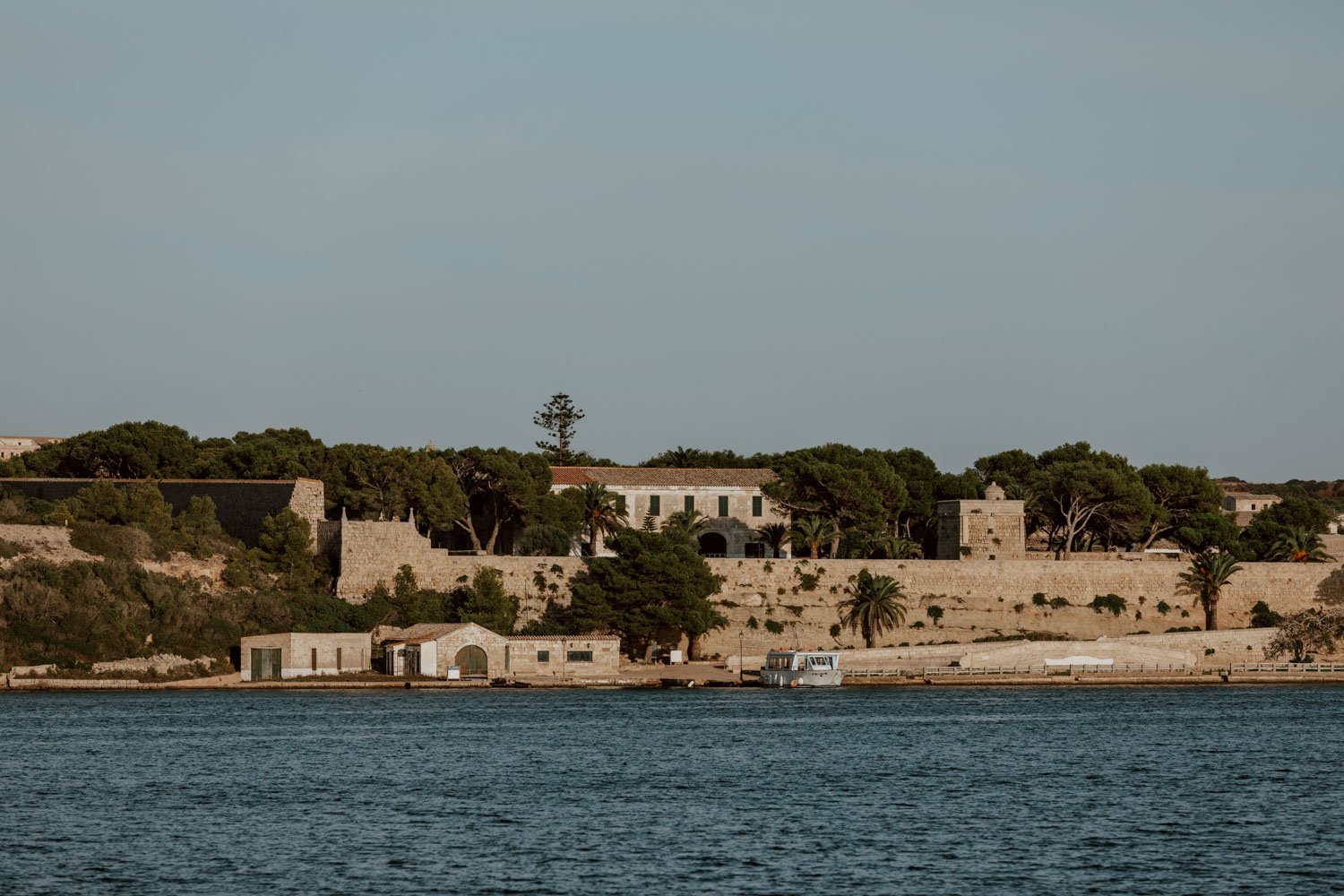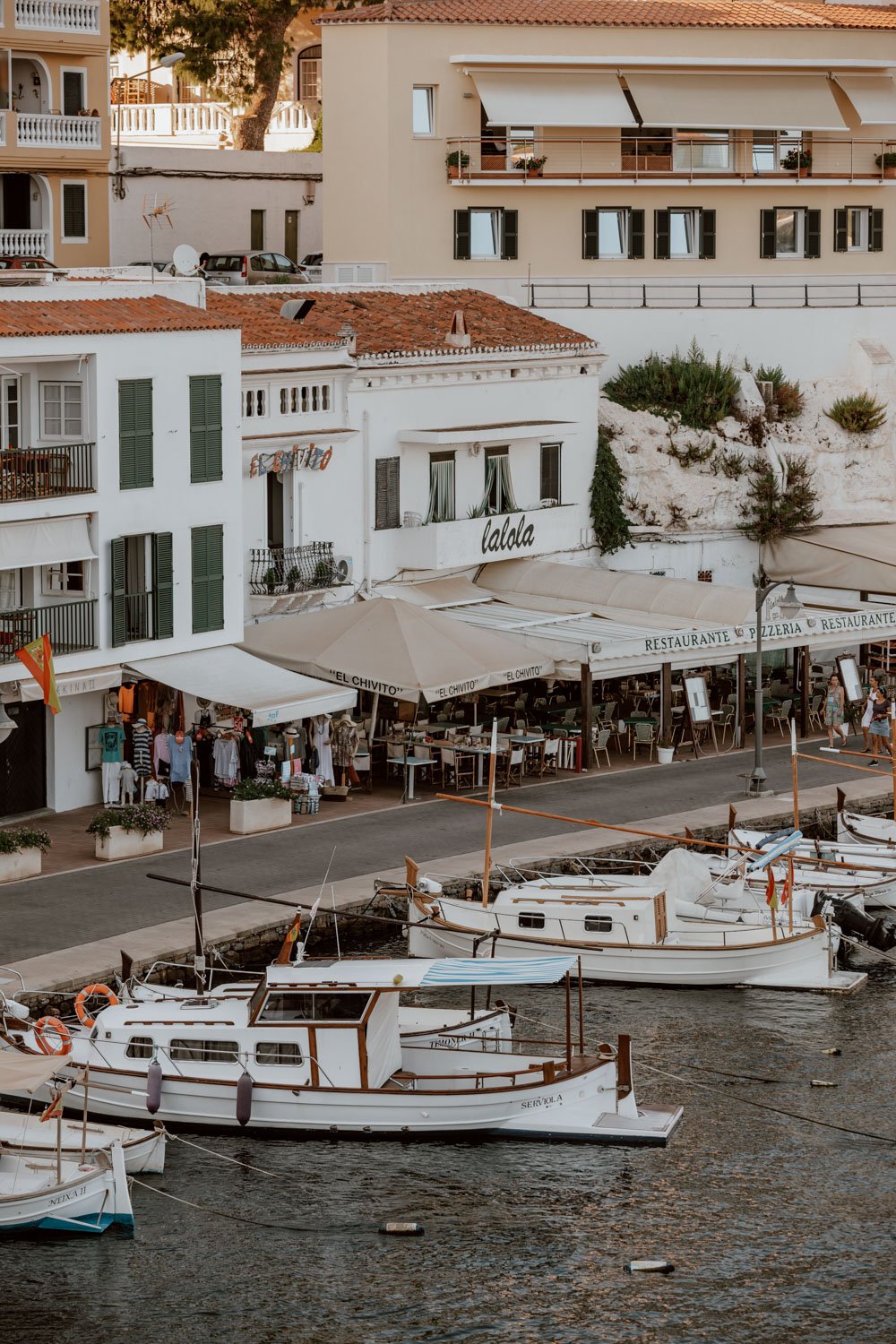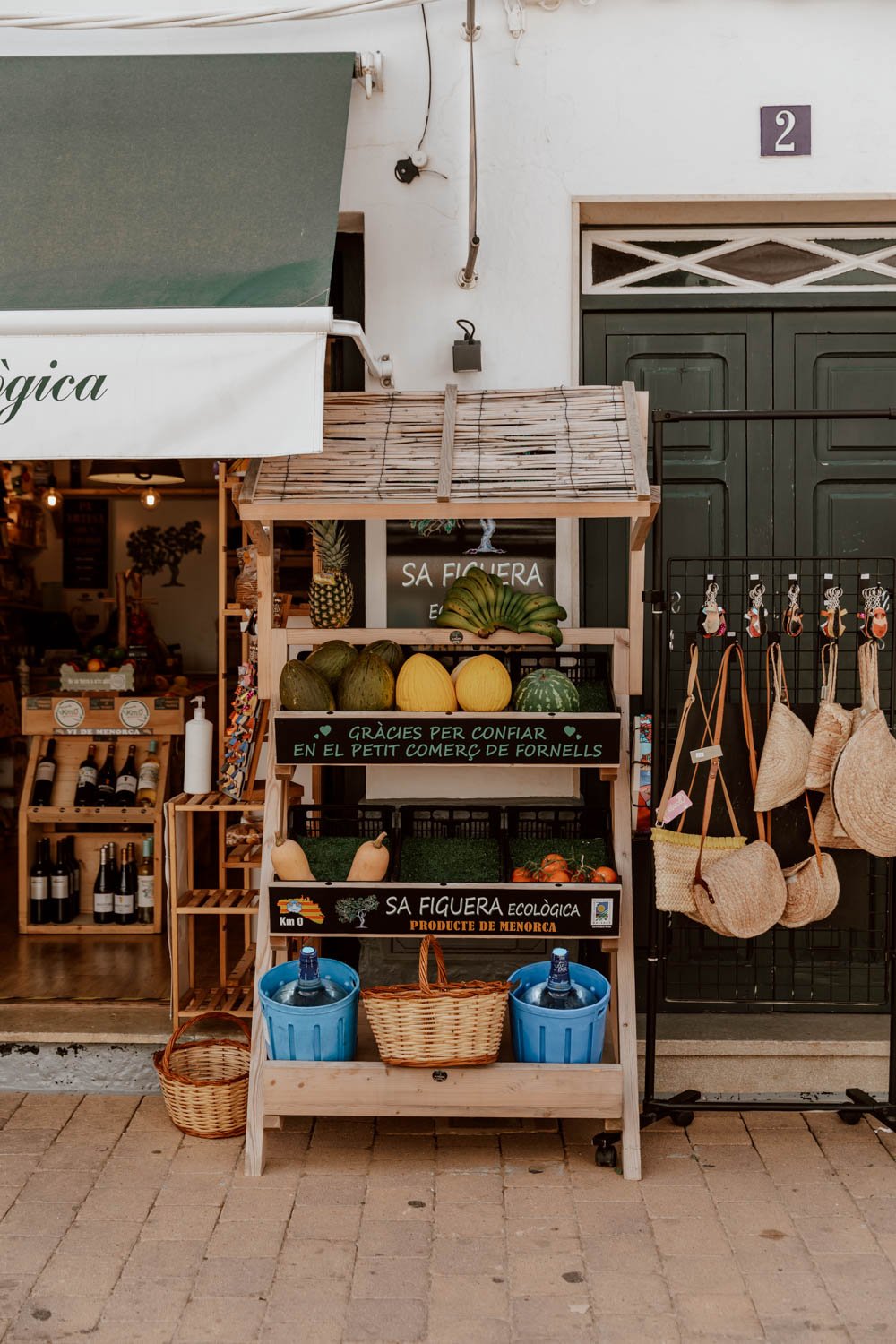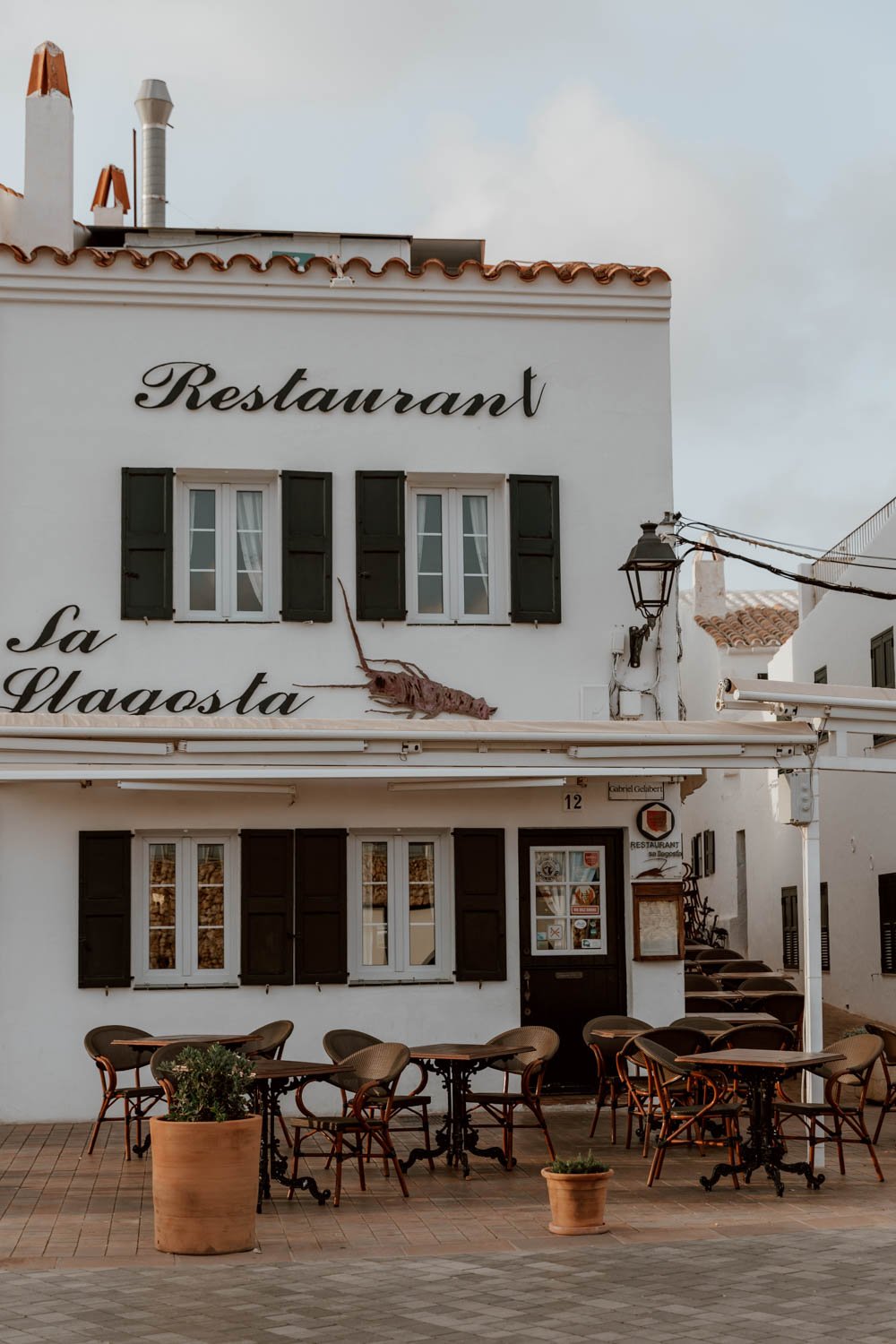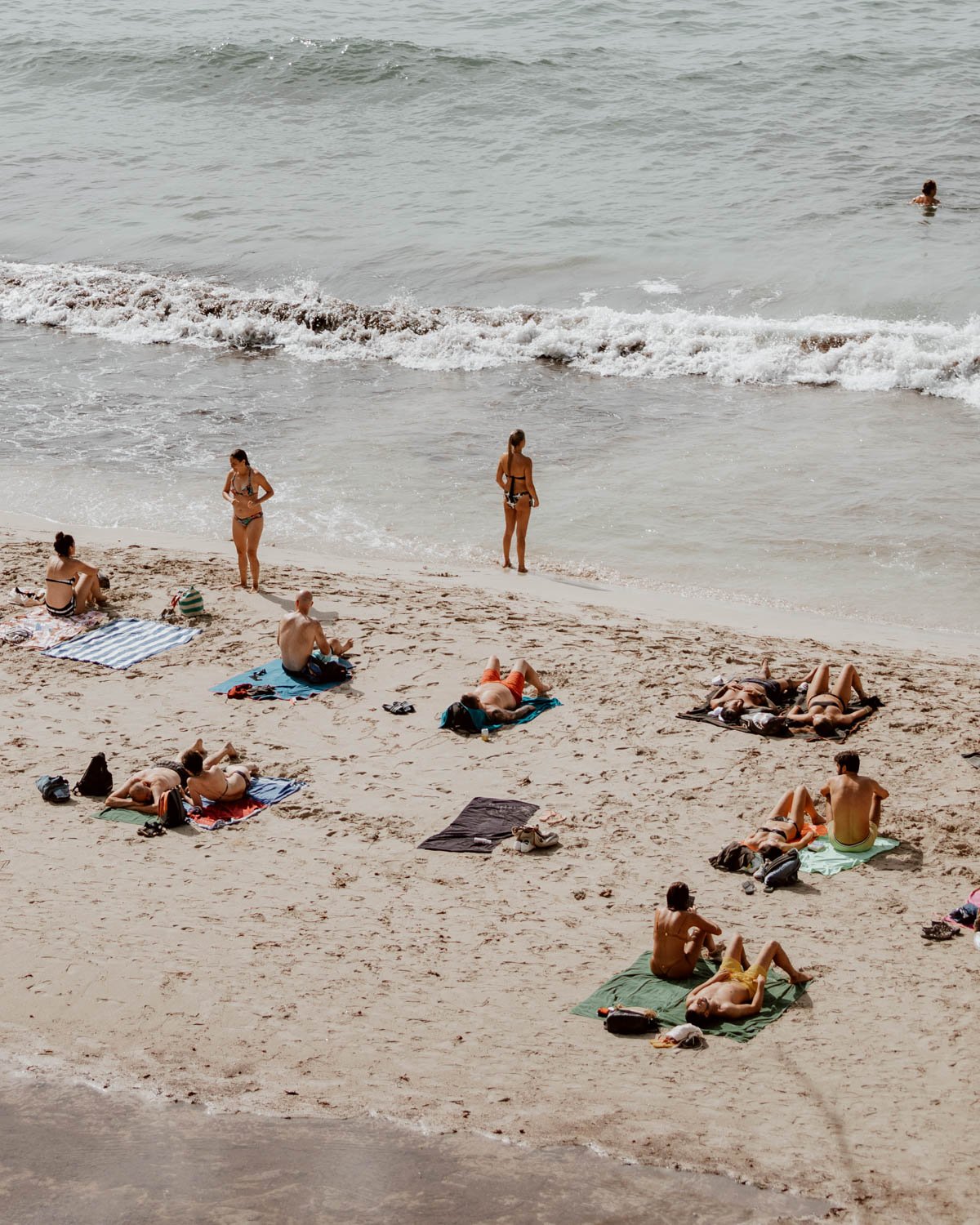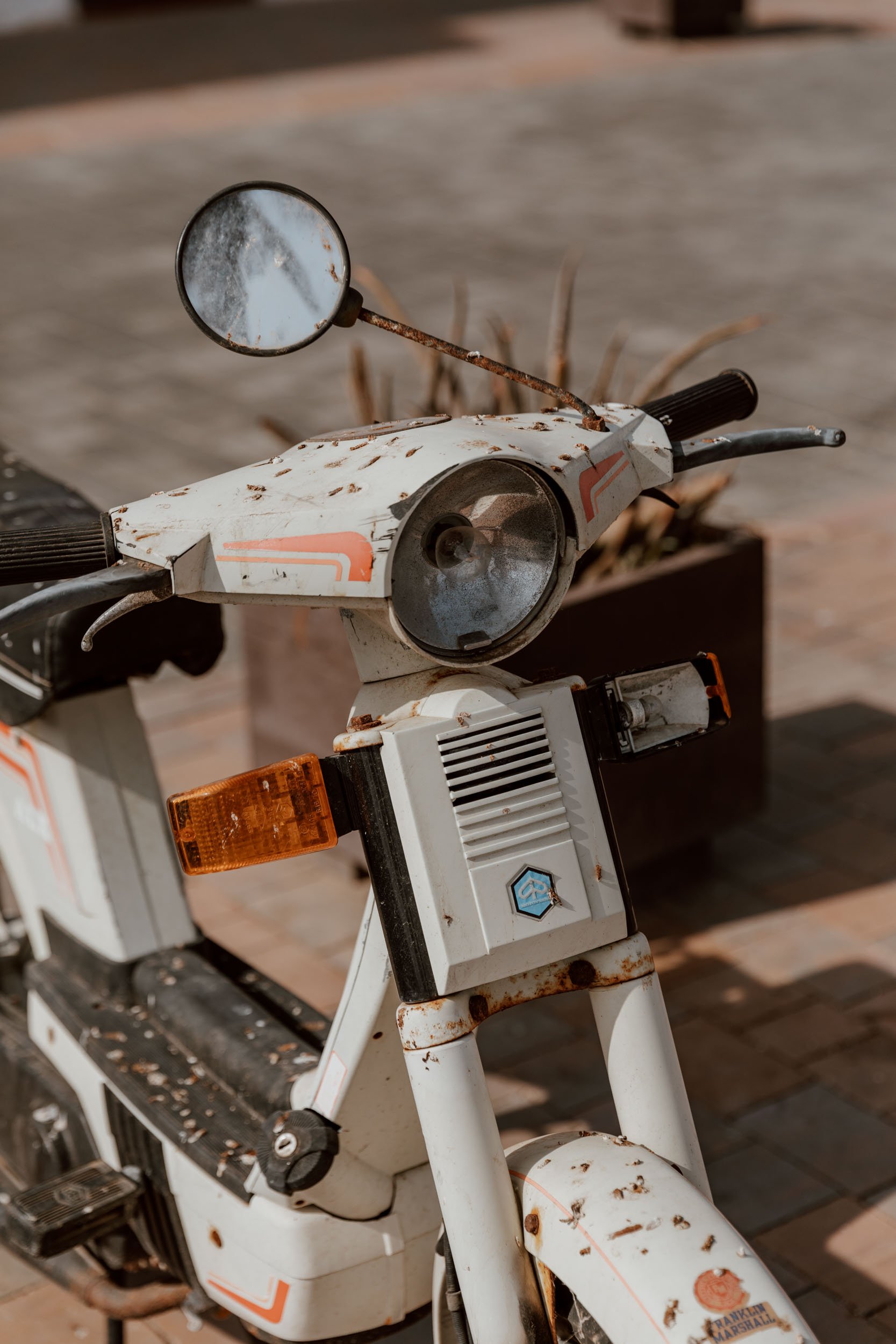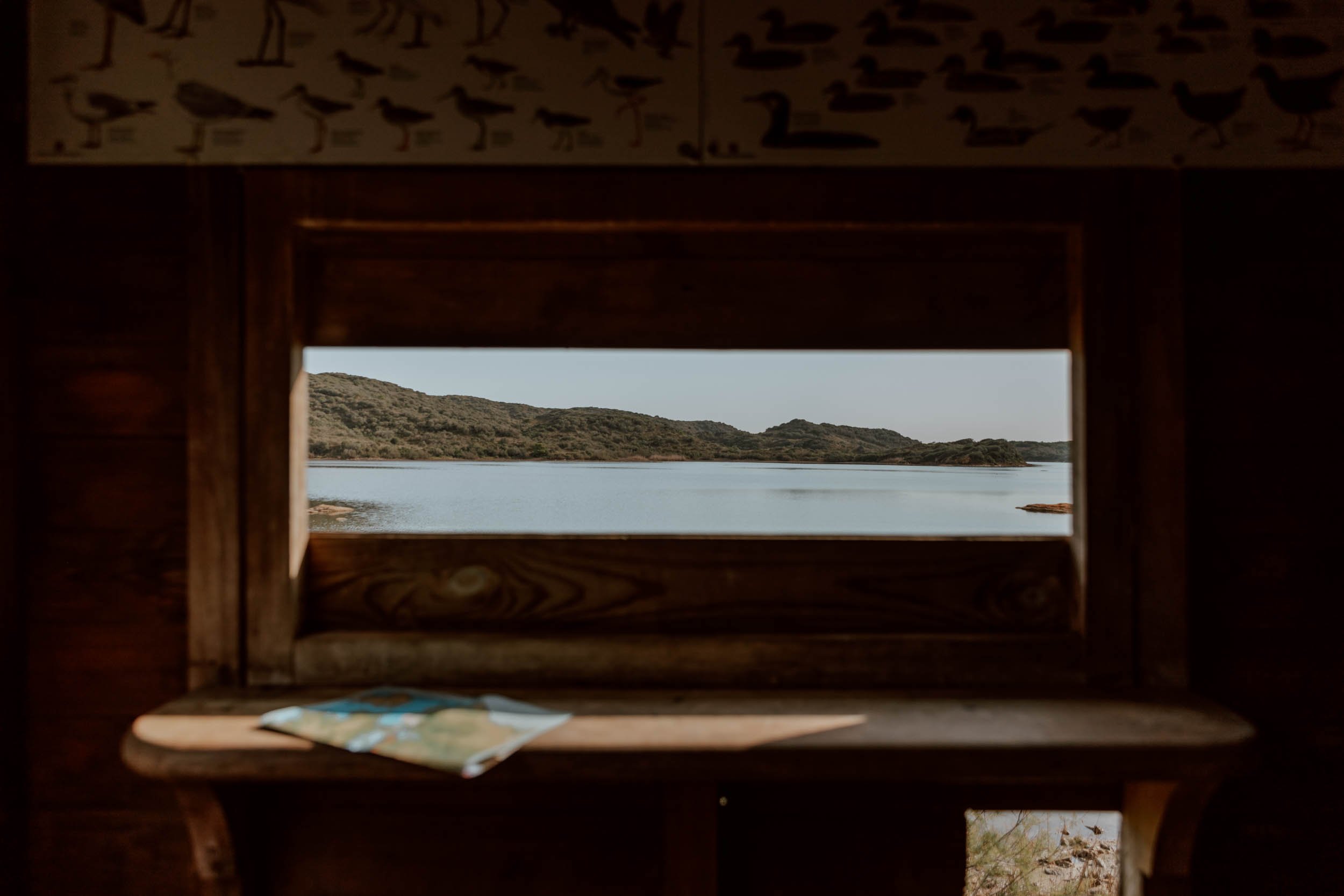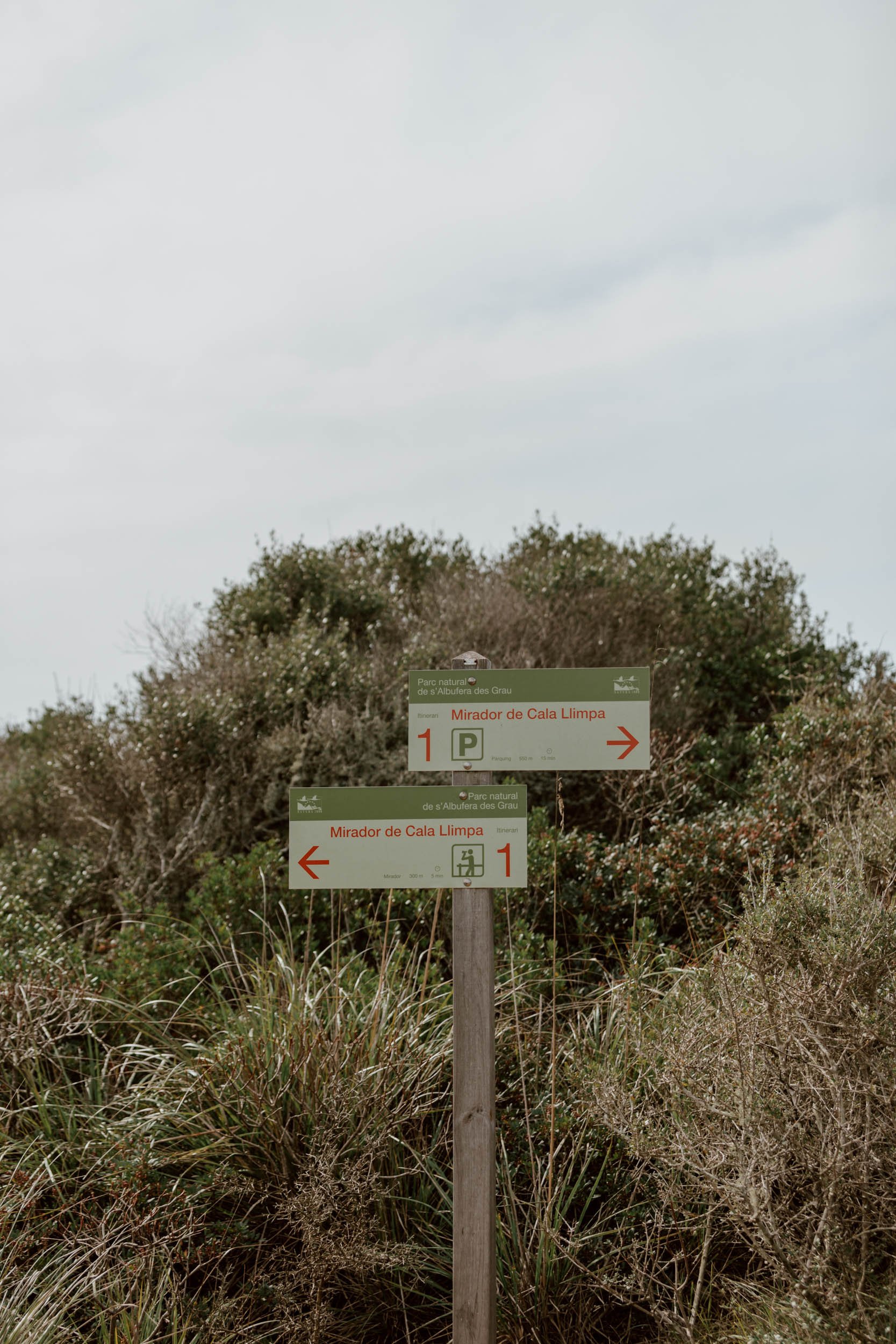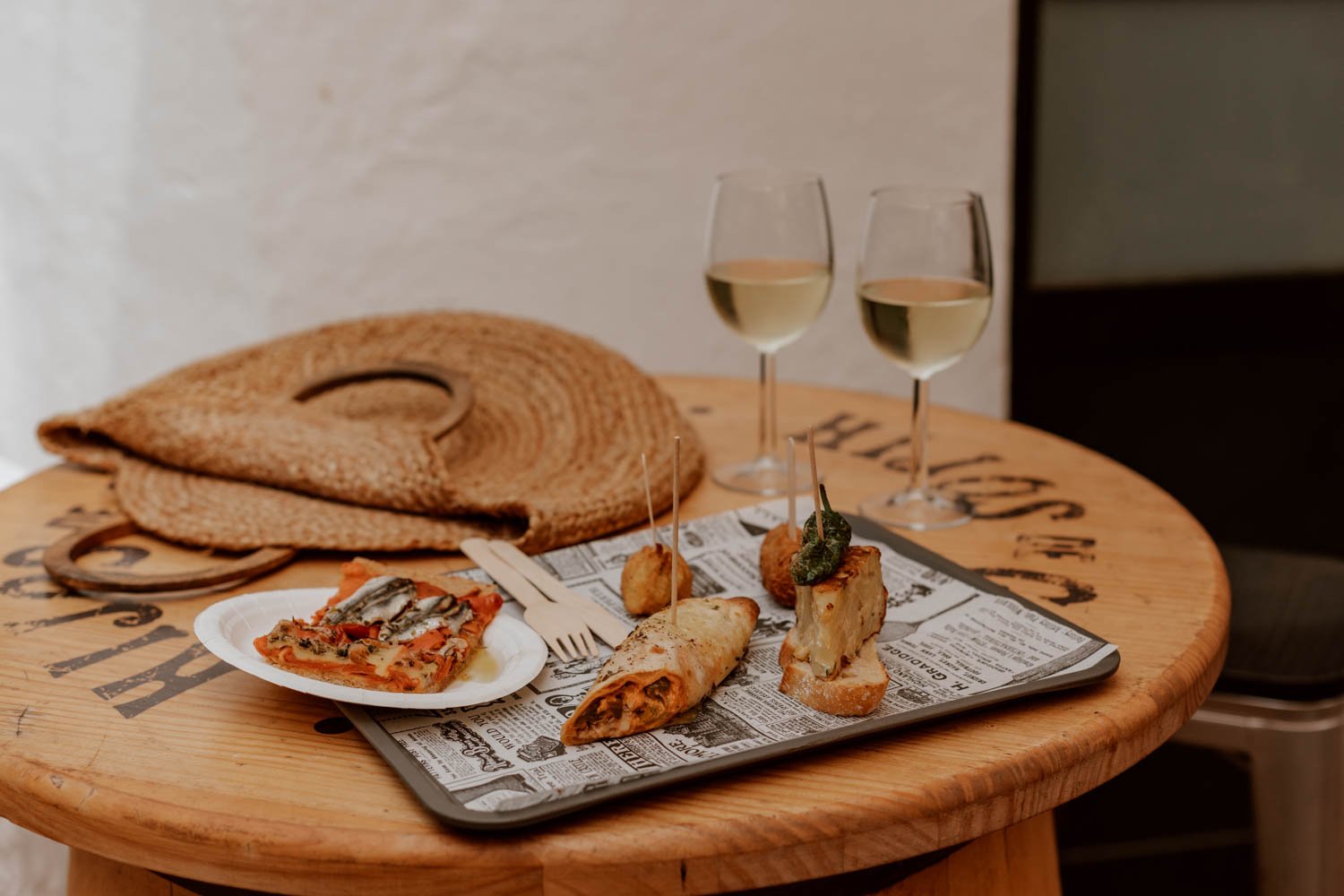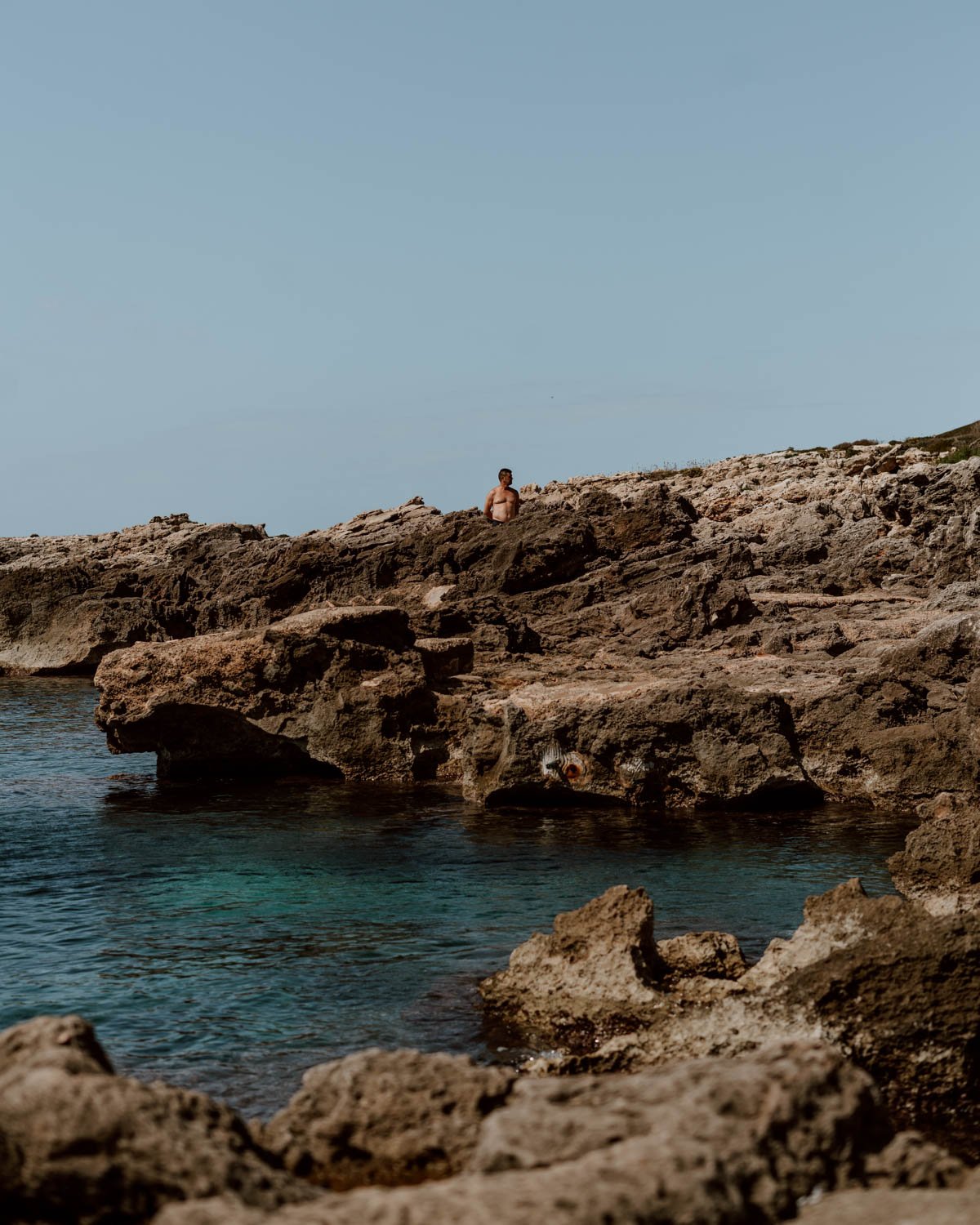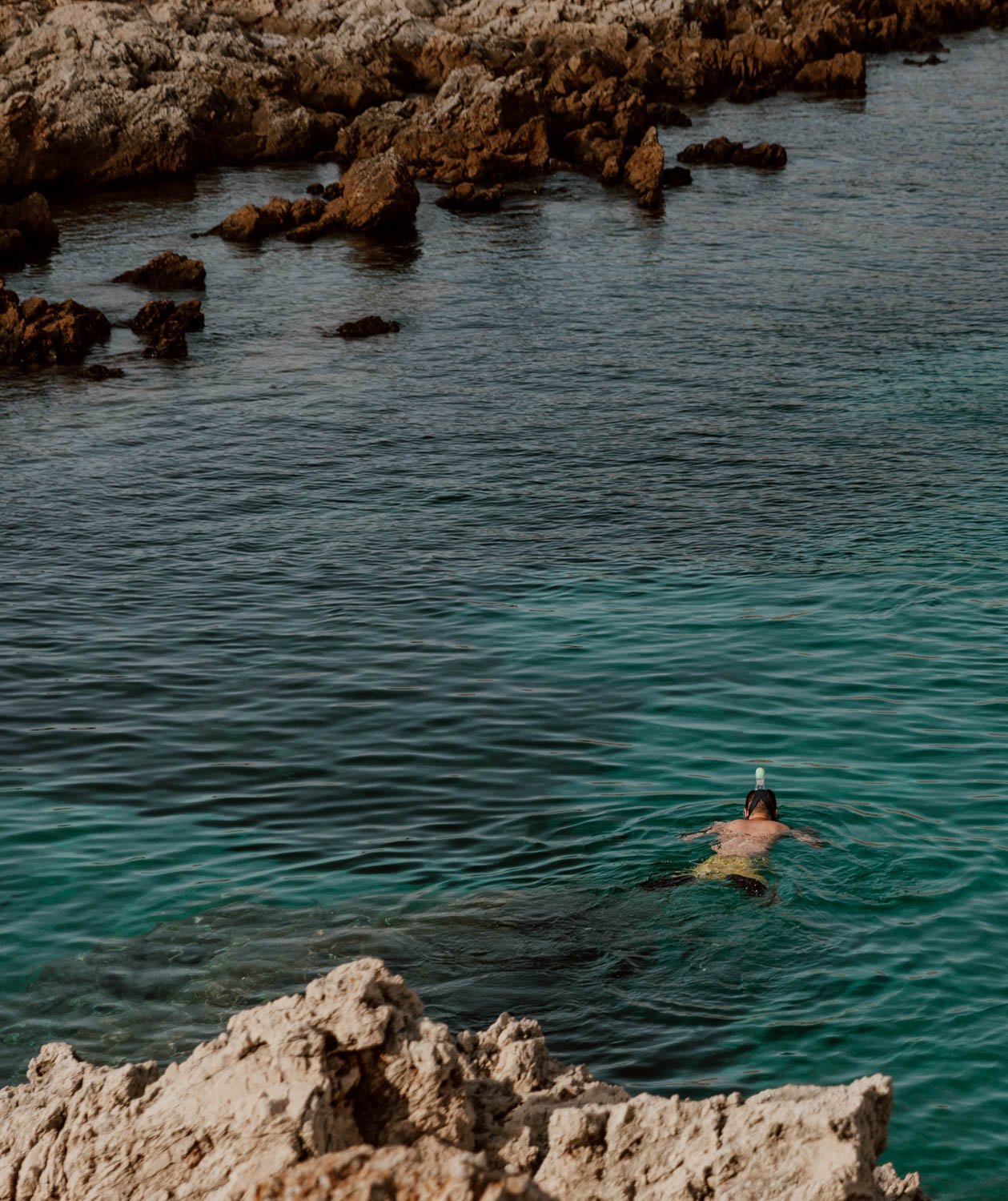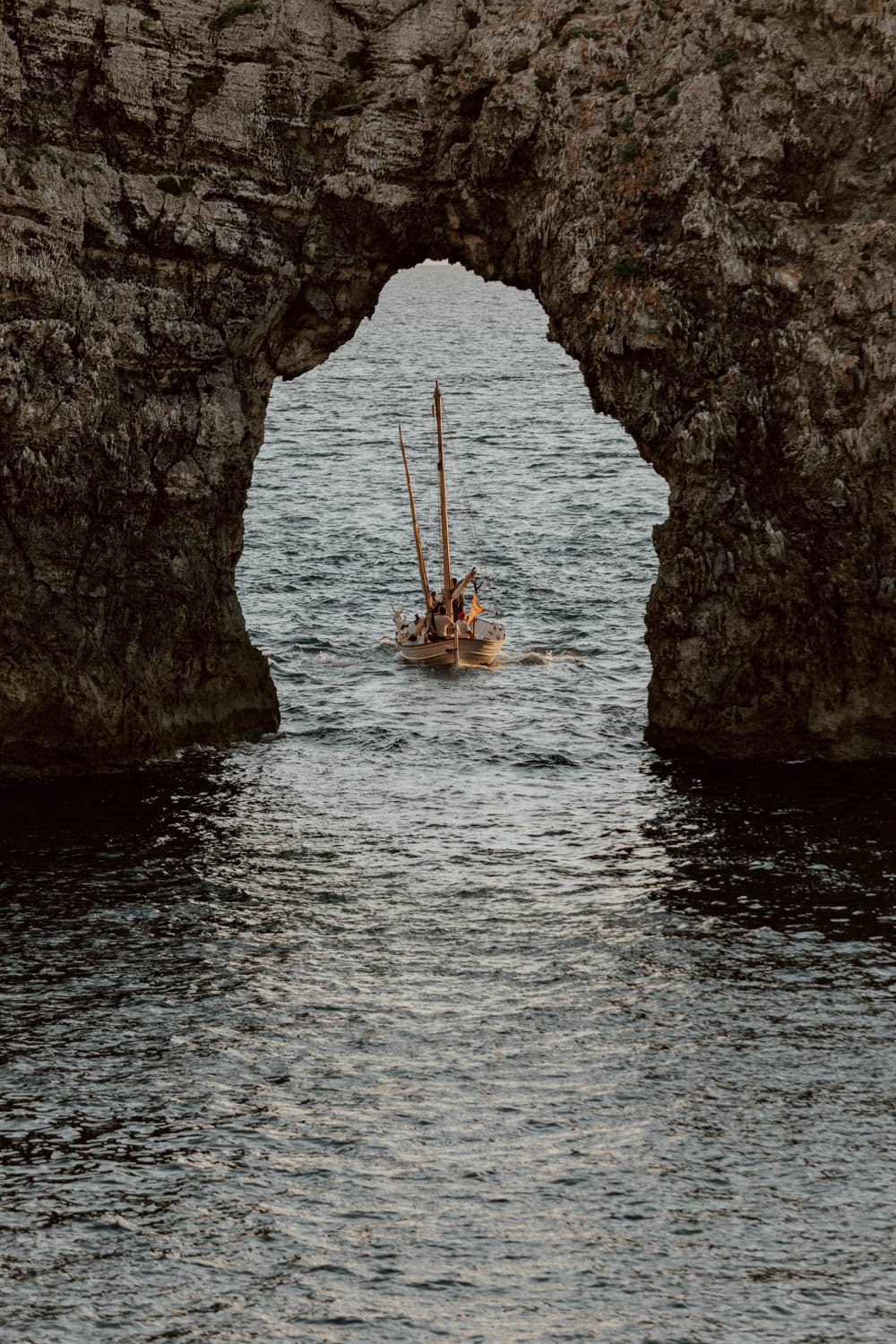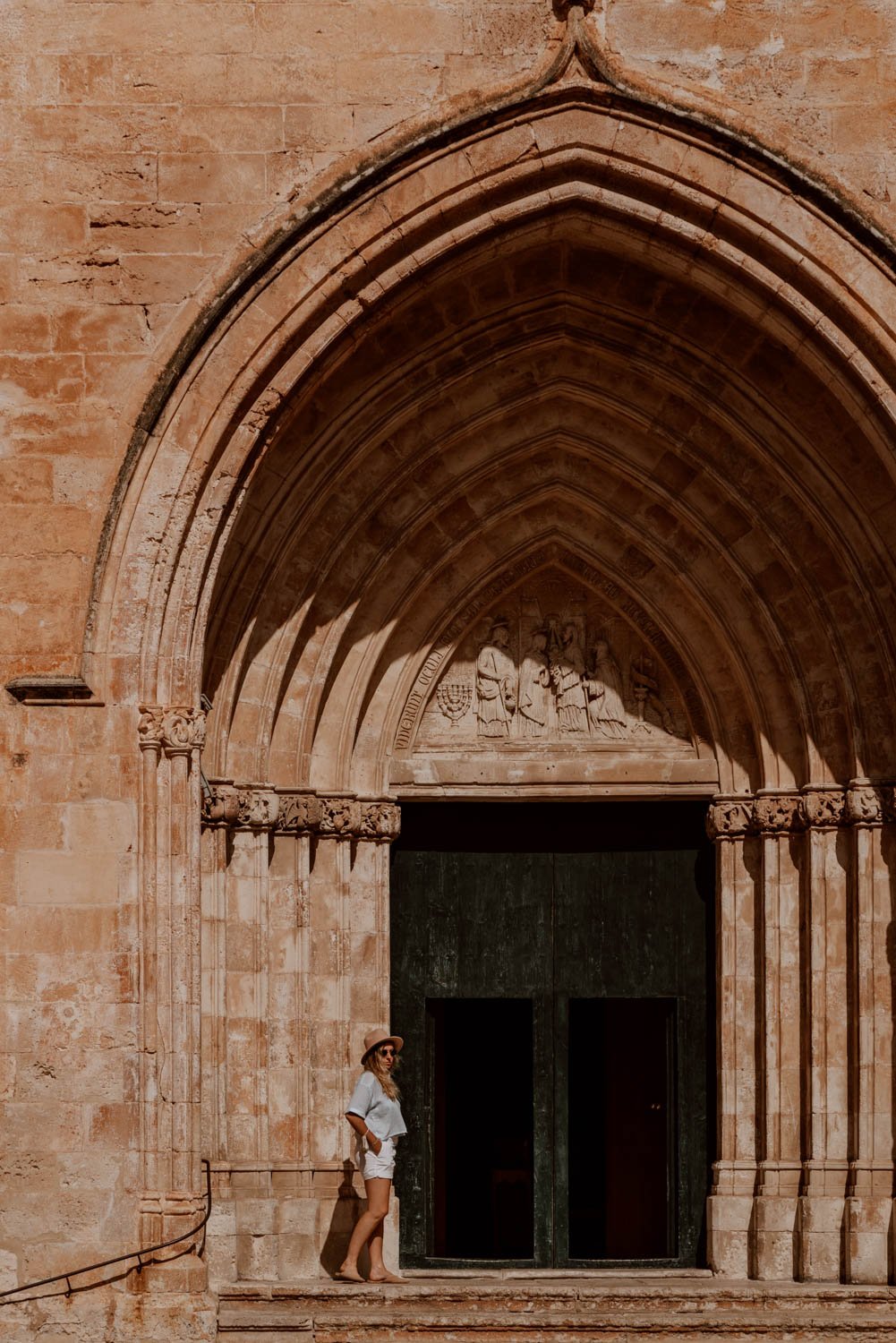After our month in Menorca, we wanted to share the essential travel tips and advice to help you plan your own visit to this beautiful Balearic Island!
Though diminutive in size and a popular summer holiday destination for decades, the island of Menorca has certain quirks and unexpected features which are certainly worth knowing about before you start planning or booking anything properly.
Smaller, better protected, less developed, and much more low-key than its fellow Balearic Island neighbours of Mallorca and Ibiza, it's ideal for an early spring or late summer sun escape.
Home to 70+ paradise beaches and calas, the most divine water we've ever seen, fantastic flat trails for walkers, two pretty port cities, artisanal food producers, and underpinned by much more historical intrigue and influence than one may assume, Menorca also provides a surprising diversity of travel experiences for the (nearly) complete gamut of travel styles.
So much so, that many of you reading this right now may be planning for a quite different week or two than others reading it.
Whatever your travel style, this post will help you all widen or improve whatever you've got in mind for Menorca (whether it's just beaches and relaxation, foodie/cultural experiences, or walking the whole of the Camí de Cavalls trail).
With an emphasis on practical tips alongside providing essential context and trusted resources, our post will give you all the information and insights you need to get started on planning your Menorca holiday and to travel more, travel better. From how the buses work to the best beaches, the time of year to avoid and the influence of the British, to the reason why a good Airbnb is hard to find, gin lovers shall rejoice, and whether you really need a rental car - we’ve got you covered!
Here are 23 essential things to know before you visit Menorca.
——
Psssst. If you want more Menorca travel inspiration, then make sure to check out 19 Wonderful Things To Do in Menorca next!
There's Only One Airport
Menorca Airport, also known as Mahon Airport (MAH), is the sole airport on the whole island. It's situated on the southeast of the island, just under 3 miles (4.5 km) from Mahón - the capital city of Menorca.
This makes finding flights and planning your arrival very straightforward, with all the budget European and British airlines serving it.
Transport connections to/from the airport are quite good, but you will have to pick and choose based on your budget and plans for the island:
Taxis | Will take you to any and every part of the island, with the fixed tariffs for each destination transparently displayed on a pillar in the arrivals halls and outside at the rank. Prices start at €15 for journeys in the southeast, rising up to €70 for resorts in the west. Alternatively, you can book a private transfer here. Note that Uber does not operate in Menorca.
Public Bus | There's only one bus to/from the airport, which takes you to/from Mahon's bus station in about 15 minutes (€2.75 per person). The service is frequent, and from the bus station you can connect to a bus to most towns and holiday resort hubs on the island.
Rental Car | We touch more on this later, but the airport is also the cheapest place to pick up a hire car in Menorca.
Within the airport, the Caixabank ATM charges a fee if you wish to withdraw money and there's a helpful tourism office as well if you need advice, help, or maps.
It is also possible to take a ferry to Menorca from mainland Spain but, for most of you reading this, we know it'll be the airport which is your first stop.
There Are Two Languages Spoken
Locals speak Menorcan (Menorquí), a dialect of Catalan, and they will also speak Castillian, which is usually known or referred to as 'standard' Spanish.
Many signs will display only the Catalan or include both languages, and it’s also why several places have to names: Mao / Mahón, Binibequer / Binibeca, Isla del Rey / Illa Del Rei. On bus signs and schedules, the Catalan name takes precedence.
For the visitor, it's worth appreciating this distinction and the strong sociocultural and political importance of this language remaining strongly spoken here. However, in terms of your travel experience, the bilingual nature of the island won’t make too much of an impact; English is widely spoken in holiday hubs and across the tourist-facing service / hospitality industries.
It’s always a good practice to try to learn some basics in Spanish or, if you've already got some, use them rather than simply depending on English; you will not be expected to speak Catalan.
Note that you may see Menorca spelled as 'Minorca' online or in books - this is the older English spelling for the island, but it's becoming less commonly used.
Know The Best Time To Visit Menorca (And The Worst)
Perhaps the most important thing to know, and the element that will have the biggest impact on your Menorca travel experience.
Unofficially, the tourism season begins on 1st May and runs through to the end of September or mid-October. Very much a summer holiday island, lots of Menorca effectively shuts down for the winter season; this encompasses restaurants, businesses, cultural venues, car rentals, hotels, watersports activities, resort towns, as well as public transport connections to locations which are only going to be popular (like Cala Macarella and Cala Galdana) when the heat is up.
The summer season can be spilt into the following periods:
May to mid-July | The off-peak 'shoulder season' when prices and availability are at their best, all businesses are back open, and coastal transport connections increased. Average temperatures are May (13-21°c), June (17-25°), and July (20-28°+). Earlier visits may mean weather too chilly for proper beach / sea swimming days, whilst prices will gradually rise the closer you get to July.
Note that you can also visit in April but we'd recommend waiting until May in order to have more services and options of things to do in Menorca.
Mid-July to end of August / beginning of September | The high season where temperatures and prices rocket. All coastal bus connections to beaches and resorts are running with increased departures, but crowds of holidaymakers from all over Europe arriving to share them with you. Accommodation costs will be quite ridiculous in places (more on this later), but it’s the amount of people which will be the biggest bugbear.
Average temperatures are 21-29°+ in August and 19-27° in September. Note that conditions during high season will mean early starts and afternoon breaks or respite in the shade are absolutely essential.
Mid-September to end of October | The late summer 'shoulder season' definitely has its pros: crowds are more manageable, prices are on a downward trend, all businesses and services are still in full operation, and the Mediterranean sea is also deliciously warm whilst the cooler temperatures make hiking much more enjoyable.
We arrived in Menorca in the last week of August, and spent a month there - there was a noticeable drop in prices and crowds from the second week of September onwards.
The only con to bear in mind is that the chances of changeable or overcast weather are greater in comparison to July / August. With average temperatures of 15-23° in October, we also recommend trying to arrive earlier in that month rather than later.
It is absolutely still possible to visit Menorca outwith these seasonal timeframes, but it will fundamentally change what you can do and where you can stay.
For those of you hoping to hike the whole of the Camí de Cavalls, doing this outside of summer is actually a great idea due to the more clement conditions for walking.
There's No Single ‘Menorca Travel Experience’...
We touched on this in the intro, but really think it's worth emphasising here.
Despite its size (north to south is 10 miles, east to west is 30), there are actually quite a few different ways to experience ‘Menorca'. The average plane journey from the UK to the island will have at least one person or group who will experience it in quite different ways:
the package holiday one
the foodie one
the hiking one
the sunbathing all day one
the independent trip one
the city break one
the family holiday one
the sustainable slow food one
the luxury resort one
the watersports + sailing one etc
Each style will of course have a healthy sprinkling of beach, sea, and leisure time in common...but which type of beach and how are you getting there? Are water parks important or something you'll avoid like the plague? Do you want to eat English food or freshly caught seafood? Do you want to experience a lot of the island or just stay in one little pocket for a week? Will you take public transport everywhere or hire a car to explore? Do you want to be based in a tourist town, a colonial city, by the sea, or a rustic farmhouse in the middle of nowhere?
So, when we we're talking about 'travel in Menorca', it's really important to understand that it's impossible to do a one-size-fits-all description of the Menorca travel experience. A family going on a fun holiday with kids will have quite different expectations and priorities in comparison to the young couple who love to hike along dusty roads to wild beaches and stay in quiet places, or the foodie older couple who like to explore but money is no object when it comes to accommodation.
The beauty of this means that you are also not limited to just one type of Menorca experience when you visit; it can be beaches one day, hiking the next, a foodie city break later on, travelling the coast on a scooter or a lazy day by the pool followed by romantic sunset cocktails in a stylish cave bar in the evening.
Your personal travel style, budget, where you stay, the type of accommodation you stay in, and whether you have a rental car/scooter will heavily shape all of this.
...And It Isn't Ibiza
Sorry lads, this isn't the place you might be thinking it is.
Ibiza, Mallorca, Menorca, and Formantera (the Mediterranean archipelago collectively known as The Balearic Islands) are all very popular with various types of Spanish, British and European holidaymakers. However, Ibiza and Mallorca have a reputation (both positive and negative) as places for younger tourists and groups of friends to go for fun, sun, clubs, and nightlife.
Or the detested 'lads holiday'.
Menorca is definitely not a destination for those looking to party though: it's not got a Benidorm or a Magaluf, loads of nightclubs, or thousands of concrete tower monstrosities by the water, or the type of cheap bar streets where boozy groups congregate.
There are several reasons for this divergence, but a principal factor was the long-standing grudge held by General Franco against the little island. As punishment for its Republican stance in the Spanish Civil War, the dictator deprived Menorca of public building funds and infrastructure investment for the entirety of his near four-decade rule.
On the other hand, Mallorca and Ibiza (which had both supported Franco), were showered with money for intense and misguided development during the tourism boom of the 1960s and 1970s.
This means high rises and large-scale resorts are rare in Menorca, with pretty whitewashed apartments on one of two levels and houses with ivy-green shutters much more common (although there are a few designated resorts where a single high rise sticks out as the exception). Dodging the bulls of unrestrained commercial tourist development is a big part of the charm of Menorca, and sets it apart from other other places in Spain which have been irrevocably changed by the influx of mass package tourism and short-term stack 'em high construction.
It won't take long for you to realise which place had the last laugh...
The Best Beaches Are A Walk Away…
Menorca's beaches and coves (calas) are pure paradise, and the main reason we decided to go back to the island for a month.
You should be, justifiably, very very excited about them.
The best and most popular white sand stretches are found on the south coast, such as Cala Macarella, Son Bou, and Cala Mitjana, but the more remote and rust-hued beaches of the north, like Cala Pregonda, are equally breathtaking. Before you put anywhere in your own map though, it’s important to understand:
1. You won't be able to visit all the best beaches if you're here for a week or two.
2. Where you're based on the island is a big factor in determining the beaches you will be able to visit without your own transport.
3. There are three very different types of beaches in Menorca, which we’ve categorised as ‘Tourist Zone’, ‘Park + Walk’, and ‘Remote’.
4. The very best virgin beaches are secluded, set within nature, have no facilities, and are only accessible on foot.
We have given much more information and inspiration to help you better understand the above, as well as pick which beaches to put in your map, in this separate article: The 19 Best Beaches in Menorca.
…And Nudity Ain’t No Biggy
Toplessness at the beach in Spain is very common practice, and the boobs can be set free at any and all of them.
That may not come as a surprise to many of you who have travelled here before.
However, when you’re faced also with a dangling member or three at the beach, then that’s when it definitely merits a mention in this type of post!
There are lots of nudist-friendly beaches and coves on the island. It may be limited to a section of a popular beach, or a whole beach, but the fact is not usually signposted. You won't be singled out if you don't get in your birthday suit, but the vibe is very open and relaxed so feel free to join in (we do).
Otherwise, be respectful and don't turn up at these to be a perv, a prude, or out of tittering curiosity.
Whether or not your unmentionables will be exposed to the sun or not, we highly recommend taking a small parasol or beach tent with you if you plan on having full days at any beaches in Menorca. There is usually little to no shade available, and only some beaches offer sunbed & parasol rentals.
Whatever you wear, if driving or taking public transport for a day trip to the most popular beaches high season, it should involve an early start.
The free beach car parks will fill up by about 10 or 11 am, whilst seats will be scarce on packed buses. If you leave it too late, it will lead to disappointment and changed plans, or an uncomfortable, crowded experience. We’re not advocating getting up at 6 am on holiday or anything, but rather just do a bit of planning the night before so you know connections and travel times, rather than leaving it until 11 am to make a plan.
Plan // Read our guide to the 19 Best Beaches in Menorca for more advice.
How to Plan Your Menorca Itinerary
Menorca is very small - which is to its benefit - but this can also be deceptively tempting for a first-timer. From attempting to cover too much ground in just a couple of days with a rental car or underestimating the inaccessibility of large parts of the wild, pristine coastline, it’s important to accept that you can’t cover the whole of Menorca in a week (and nor should you try).
Instead, we recommend picking a pocket of the island (the southeast, south coast, north coast, a little town in the centre, or the cities of Mahón or Ciutadella) and then exploring mostly in and around that area for the week - alongside relaxation and eating and lazy days by the pool of course - with day trips by bus or with a hire car / scooter as and when.
Why?
The unique geographical layout and road system of the island makes it difficult to cover too much ground. Many of the best places to access independently with a car - those gorgeous beaches and calas plus some cute little towns - require a bit of a drive and often a bit of a walk IN ADDITION to the drive. Also, factor in that you then you actually want to walk that Camí section, lay down in that bit of paradise for a few hours, indulge in that long lunch or savour that sunset, rather than simply getting back into the car and moving on to the next pin in your Google Map.
So, please take our advice and DO NOT try to do all the island in a week or two. Instead, pick a section of the island as your base (we give more advice in a later section), and factor in two day trip activities max. per day unless you really do just want to drive around sightseeing.
How Long Do You Really Need in Menorca?
A week is perfect for a holiday and first-time visit to experience the highlights, whilst 10-14 days would only be ideal if you are happy to travel slow and adore either walking or the beaches. If not, it may be a bit too long of a stretch (though not unenjoyable) given the sedate pace and layout of Menorca. If you do opt for two weeks in Menorca though, we’d highly recommend switching your base after a week so that you can focus on getting to know different parts of the island intimately and minimise repetitive driving stretches.
Shorter visits are less common, but the size and connections of Mahón and Ciutadella size and connections make them good options for a long weekend or 4-day spontaneous break in the early or later summer.
Whilst we’re on the subject of those two cities, it’s worth mentioning that on shorter trips, it’s unlikely that you’ll visit both of them. Mahón is in the east, whilst the old capital of Ciutadella is in the west, so pairing them both in a week-long visit may not be desirable (why visit two cities here instead of an extra beach day or coastal hike?) or practical depending on where you’re based. To choose between them, read our destination guides:
Plan // 13 Wonderful Things To Do in Ciutadella + 13 Wonderful Things To Do in Mahón
The British Once Occupied It
A strategically important foothold in the Mediterranean for centuries, Menorca was fought over by rival European superpowers throughout the 18th century. The Dutch and the British wrested it from Spain in September 1708, with the British taking sole occupation in 1712, before the island was traded between France, Britain, Spain via various sieges, battles, and treaties.
Ultimately, the Spanish reclaimed full possession of Menorca in June 1802, but it’s the 70-year period of the British occupation of Menorca which had perhaps the most lasting influence. Under their control, the capital was moved east from Cituadella to Mahón, the harbour town of Es Castell was created, the Cami d’en Kane was built, defences and ports were developed alongside other important infrastructure and architecture. There are also a few curious “anglicisimes” in the local language, words which derive from the English spoken by the British forces stationed here.
Most importantly, gin was introduced to the island (more on that later!)
The legacy of the British can still be seen in various places, and those with an interest in the military history of this period and the role of the British, should absolutely pay a visit to Es Castell as well as two museums we recommend in Mahón.
You Will Walk The Camí de Cavalls
Menorca is great for hikers and those who love dusty roads.
A key reason for this is the Camí de Cavalls, the 185 km / 115 mile trail which circumnavigates the whole of the island in twenty way-marked sections.
A haven for walkers, it also threads together the coastline for those who wish to access or link the remote, rustic beaches and calas. As a democratic footpath - equally open to the serious long-distance hiker and the casual short-walk holiday-maker alike - it forms an integral part of everyone's travels in Menorca (except those who never leave their accommodation or the poolside).
Some people and groups arrive here specifically to walk the full trail across multiple days, but the nearly all of you will step foot upon a section or several of the Camí during your visit.
Find out the essentials on the routes, necessary kit, and beauty of the trail in this post: 7 Things To Know Before Walking The Camí de Cavalls.
Choose Your Base Carefully
During our month on the island, we made a point of visiting every nook and cranny in order to give you an honest insight on to where to base yourself and where to avoid.
Which part of Menorca is best?
Most first time visitors will want to visit the famous white sand beaches on the south coast, which also has a very good set up for tourism. The rugged northwest and northeast have several hidden gems, but fewer accommodation hubs and slightly poorer public transport connectivity. Staying in one of the three small interior towns will appeal to some independent travellers as an alternative way to experience the island, but it won’t be realistic or attractive for anyone on ‘holiday’ mode. Lastly, basing yourself in and around the cities of Mahón or Ciutadella offers several advantages over the coast, but does mean you’re not by a beach!
Importantly, there are a number of generic coastal ‘resort towns’ which have definitely seen better days in Menorca. These cater more toward package holidays and all-inclusives, and will definitely be somewhere that some of you may wish to avoid.
Fundamentally though, your choice of base on the island will really shape your Menorca experience and what you’re able to see / do, so don’t simply base it on how cheap the apartment may be.
We have given much more advice and tips - alongside our picks on the best places to stay in Menorca and specific accommodation recommendations for all budgets and travel styles - in this post: Where To Stay in Menorca.
Don’t Expect To Stay in an Airbnb
For a whole generation of travellers, looking for your accommodation on Airbnb is as natural as breathing.
Although you can find and stay in properties in Menorca on Airbnb (we did!), the coverage, type, and availability is not like many other holiday destinations. This is due to the local government introducing a series of regulations and licence requirements on apartment rentals, including limits on the number of days per year a property can be rented out, the number of properties an owner can list, and the overall ‘stock’ of rooms / rentals available.
Whilst we’re prodigious users and recommenders of Airbnb, we fully recognise that allowing it to sprawl unchecked across towns and cities had a number of negative consequences, so it’s difficult to substantially criticise this step to check unlimited rentals and the impact unsustainable tourism growth on locals, services, and destinations. Indeed, we’ve long advocated for cities to take positive steps to redress the balance.
The only thing we will say based on our personal experience is that it does unfortunately mean some independent travellers who don’t wish to stay in the defined tourist resort hubs may find themselves disappointed by the accommodation they can have in Menorca. With large villas being unsuitable or too expensive for couples or small families, hotels become the most likely option for a number of places, which may perhaps not offer up a good match with how you travel or choose to experience somewhere. Similarly, the standard of some hotels in the coastal resorts isn’t great.
However, this doesn’t mean you can’t find and rent legal Airbnbs in Menorca - we stayed at this fantastic little villa outside Binibequer for a week as well as this apartment in Son Bou. The regulations have also seen a rise in hotels in Ciutadella which effectively act like an Airbnb (i.e. you get a room but there’s no reception or hotel amenities).
Plan // Where To Stay in Menorca
Factor In The Tourism Tax
The Balearic Government also introduced the Menorca tourism tax in 2016. This applies to all guests in accommodations, and is determined on a fixed price per person per night.
It is charged on a sliding scale, relative to the type of property you’re staying in i.e. you pay more at a 5-star hotel than a little guesthouse. €1 at the lowest end, €4 at the highest (at time of writing). Airbnbs and direct rentals are also meant to charge this tax, whilst the price per night drops substantially in the low season (November-April) to €0.5 to €1 per night. The amount charged reduces by 50% from Day Nine of a long stay in a single property, and children under 16 are not taxed or included.
For most of our accommodation bookings, this tax was included in the overall payment when reserving or absorbed by the company; they’re the ones actually responsible for paying the government, so may simply take the haircut to stay competitive. However, at ARTIEM Capri in Mahón (a place we highly recommend if you’re staying in the capital), it was charged separately prior to out check-out.
If unsure, simply double check before finalising your booking, especially if you’re on a strict budget or planning on a longer stay in a single accommodation.
As above, as a lot of the income from this does go toward encouraging and improving sustainable tourism and the environment on the island, so it’s difficult to criticise it really.
The Me-1 Road Is Central To Every Journey
A short but very important point to help you better understand why, alongside much of the island being protected, much of Menorca’s coastline is quite inaccessible.
Although diminutive, its size is deceptive. The coastline is about 216 km / 134 miles, but doesn’t a have a single joined-up tarmac road going around it - instead, it’s the car-free Cami de Cavalls, which is only accessible to walkers, horses, and cyclists.
For drivers and buses, the island is split in two by the tarmacked Me-1 main road, and any and all journeys ultimately go via this and then branch off north or south to a town, a resort area, or down narrow, dusty country lanes to remote beaches.
It’s sort of like a fishbone system, with one single road running west to east from Mahón to Ciutadella, and lots of small, narrow offshoots.
This means that simply looking at a map and proximity is misleading for Menorca. For example, the coastal town of Cala Galdana is a popular option for accommodation, and really close to several of the best beaches in Menorca. However, to drive to any of them you have to go north to the interior and the Me-1, west to Ciutadella, and then join the road going back south to the coast - a journey that would take 5 minutes as the crow flies therefore actually takes 45!
So, although small, navigating the island where most of the best things to do are on the coast, is actually not as straightforward or quick as it may seem, and usually involves a journey on the Me-1!
Public transport is pretty good…
The public bus network in Menorca is affordable, convenient, and offers pretty excellent coverage for visitors. Indeed, in high season, travelling by bus offers up the easiest way to reach the most famous beach on the island.
Importantly, the network ramps up significantly in the summer season, with specific lines from Mahon and Ciutadella to coastal resorts or beaches only operating from May to 31st October or from July to 31st October. If you’re visiting in those months, you won’t notice a difference, but it is an important factor if you’re visiting out of summer season.
A few essential things to know in advance about buses in Menorca:
· For certain journeys to / from the coast, you may have to connect via Mahón bus station, Ciutadella, Ferreries, Es Mercadal, or Alaior.
· Mahón bus station is clear and straightforward, but buses in Ciutadella depart and pick-up from several different points in the city (see our Ciutadella guide for more on this).
· Payment is cash only to the driver. The exact amount is appreciated, but they will give change for ‘as much as five times the price of a single ticket purchase'.
· You can only pay with banknotes in the denominations of €5, €10, or €20.
· In high season for popular day trips or coastal routes, buses will become full; arrive early to ensure a seat and don’t expect the final bus of the day from the beach to have availability.
An excellent website to see up-to-date routes, schedules, and prices can be found here, whilst it’s also worth picking up the tourism office’s ‘Menorca en Bus’ map to have coverage and connections visualised (you can download one side of it here).
...But Your Own Transport Is Essential For Many Day Trips
As we explain in this more in-depth post, many visitors to Menorca won’t need to rent a car.
For others, it will be an essential ingredient in your experience of the island.
Despite the bus network being pretty good, it won’t meet all your needs if you plan to visit certain beaches, cover several parts of the island as part of a single day trip, avoid the high season crowds, or have the greater flexibility to determine your own itinerary and day trips beyond what the bus schedule permits.
We rented our own wheels for three weeks, as well as a scooter for the day, and this really did open up the island to us as well as many experiences.
Instead of making this article any longer, we’ve shared everything you need to know about driving and renting - including tips guaranteed to save you quite a bit of money - in this article: 7 Things To Know Before You Hire A Car In Menorca.
Or, you can forget about buses, roads, taxis, and rental cars and put your money toward renting a boat for the day!
It’s very, very straightforward to rent and drive a boat in Menorca for day without a licence or any experience, and this is a popular way with tourists to visit the beautiful beaches the south coast!
We’ve shared everything you need to know, and pitfalls to avoid, in this post: How To Rent A Boat in Menorca Without A Licence.
The Whole Island Is A Biosphere Reserve
There are nearly 700 UNESCO biosphere reserves globally.
There are defined as places where “human activity is developed in a manner that is compatible with the conservation of natural resources and cultural heritage”, with the primary aim of establishing a scientific basis for the improvement of relationships between people and their environments.
Menorca was designated in 1993, and it’s one of the key factors - along with the Franco punishment - behind the place retaining its rustic natural appeal with swathes of unspoiled rural landscapes, rather than developing into one large concrete beach holiday resort.
On the island there is a sincere, concentrated focus on issues of sustainable development, environmental concern, the preservation of ecosystems, and conservation the island's natural and cultural heritage. For the average visitor, this can be most clearly seen in the form of those government measures to regulate urban expansion and tourist accommodation, the checks on Airbnb, the tourism tax, and various measures against unsustainable tourism (including visitor limits on car parks and certain beaches in high season).
In addition, about 40% of the island’s area is designated as a Natural Areas of Special Interest, including the wetlands of S’Albufera des Grau, whilst the Menorcan Northern Marine Reserve was created in in 1999 to preserve marine species and sustainable development.
Recycling, Respect & Responsible Tourism
Tourism is the primary economic resource of Menorca, and the total human population on it can almost double in peak season; it’s essential that all travellers + tourists act responsibly, with respect, and support local efforts to maintain the right balance and the environment. A few key things you can do are:
Participate in the island-wide recycling schemes. The large colour-coded bins are are in all towns, cities, resorts, and close to more developed beaches, and it only takes a small effort to sort and put your waste in them. It’s green for glass (vidrio), yellow for cans, tins, and plastic bottles / containers, blue for cardboard and paper.
Bring out what you bring in! The virgin beaches like Cala Pregonda and Cala Macarelleta do not have any facilities or bins, so it’s your responsibility to leave no trace and carry your litter back with you until you find a suitable bin or recycling area.
Water is scarce in Menorca, with water shortages not uncommon. Try to shorten showers and avoid letting taps run as much as you can.
This sounds like a really pedantic point, but not putting your towels out to dry on balconies is appreciated by locals in certain towns and resorts.
Respect signs for private land, hunting ground ( 'Coto Privado De Caza' ), or residences when walking the Camí and coastline, as well as farmland and private homes.
Menorca is a Place for Seafood, Cheese, And Gin Lovers
The island has a burgeoning foodie reputation, driven by returning Menorcans with Michelin-starred credentials from the Spanish mainland or UK aligning themselves with the local, small-scale KM0 food culture which runs deep into the rust-red soil.
Key produce includes cheese and seafood and, as you drive around, you’ll see lots of green signs for 'Queso directo en venta' pointing you toward small-scale farms where you can buy their cheese directly. Another is Sobrassada, a Balearic Island specialty, which is sort of like a chorizo sausage but softer, spread like a paste on breads or stuffed in all manner of things.
We’re vegetarians but allow ourselves to be pescatarians when travelling in a place by the sea with good traditional of local fishing, and it’s important to note that strict vegetarians and vegans will struggle a little bit. There are an increasing number of veggie/vegan-specific restaurants in the capital and Ciutadella, as well as menus including better options, but by and large the traditional palate of the island is heavily focussed on incorporating seafood, cheeses, meats, and pork fat; this extends to the ensaïmada - a delicious pastry from the Balearic Islands - which you’ll see locals carrying by the boxload all over the place (especially in Es Mercadal), which is baked with lard.
One final famous Menorcan product which, if you’re like us, you’ll imbibe copious amounts of during your time here, is gin! The cult gin of Xoriguer, created to sate the taste of those thirsty British sailors and still family-owned, is distilled in Mahón and you’ll see its distinctive bottles with the windmill label all over the place (you can also visit the distillery). A proper g&t in Menorca involves a lot of ice and a big fishbowl glass, but the preferred cocktail of many is a ‘Pomada’: a refreshing, zingy drink in the sun of gin, lemonade, lots of ice, and lemon! We also became very partial to vermouth (vermut) during our month here.
Do Your 'Big Shop' Strategically
Supermarkets situated on the outskirts of Mahón and Ciutadella are significantly cheaper - by at least 50% for many items - versus the convenient but expensive small supermarkets found in tourist hubs.
We’re big believers that you should put your money into local businesses as much as you can, and those small supermarkets will still be ideal for stocking up for your accommodation kitchen or sourcing snacks and beers on your day trip / beach day.
However, the discrepancies in costs per item do mean that you will save a significant amount by doing your ‘big shop’ outside either of the two cities if you’re staying and self-catering for 7+ days or budget is a concern. This is obviously easier if you’ve got your own rental car.
Tip | The ice-cold, refrigerated beers are always more expensive to buy in the shop than the unrefrigerated ones. Therefore, if you’re buying to stock back in your fridge rather than to glug on there and then, you can save quite a bit per can!
Towns & Cities Are Not Resorts
Spotting British males on holiday is often rather too easy.
And whilst we recognise that the vast majority of your reading this are aware of when you should and should not walk around in your swimming costumes, the number of shirtless men we spotted in towns and cities brought to our attention that some people may need a little reminder:
Just because you are on holiday, does not mean that Menorca is one big resort. Away from the beach and the associated hotel complexes, tops should be kept on and swimwear minimal. Whilst we appreciate it's bloody hot or you may want a perma-tan, literally nobody else feels the need to do this.
Trust us, no local wants to see a sunburnt Englishman without his shirt on roaming the streets of Mahón or Binibeca!
Simple rule of thumb: tops off on the beach or by the pool is cool, but in the town gets a down!
Wind in Menorca Matters
When planning a holiday for a little Spanish island, it may seem that the only worry should be whether you’ve packed a good enough book or just how much gin it’s acceptable to drink each day.
However, there’s one really really vital and specific element to Menorca which most visitors won’t realise (unless they’re incredibly smart like you, and decided to your research and read our blog post to the very end!)
Everything on this island is shaped by the wind, and locals make beach plans according to whichever direction it’s blowing.
The rule of thumb to follow is: if the northern Tramontane wind is blowing, go to the beaches and towns in the south! If the south wind is blowing, go to the northern beaches and towns!
It may not seem like it on a calm, clear summer’s day, but when the wind does arrive in force, it really can batter the coast. Aside from beach days, checking the forecast and winds is absolutely essential if you’re planning on renting a boat in Menorca or heading out on boat trip; if the conditions are bad, a refund or cancellation is not guaranteed, but a sense of money wasted absolutely is.
For accurate forecasts on wind direction and speed, use Windfinder
You’ll Need to Switch to Spanish Time
In Menorca, the afternoon siesta really is king; for visits of a week or longer, it’s not a bad idea to adjust your body clock. Otherwise you will simply be one of the many tourists sweltering at 3 pm in the city.
Many shops, businesses, restaurants, and cafes close up around 2 pm, then reopen from around 4 -5 pm. Some restaurants do however flip this slightly, opening from around 12 - 1 pm until 4 pm, then again from 7pm to late.
Eating later in Menorca (i.e. from 8/9 pm) is also the best way to actually not be the only people in an empty, but popular, restaurant...but that does at least improve your chances of getting a table during high season!
what to know about eating out
Despite visiting towards the end of the summer season, restaurants remained super busy, with reservations being essential for not only well-known spots like Bambu in Binibeca, Restaurant Ivette in Cala Morell or Binifadet just outside of Sant Luis, but pretty much any restaurant with a decent TripAdvisor rating.
If you’re travelling as a couple, and aren’t terribly fussed about where you eat, or are willing to wait some time for a table, you may get away with just turning up, but in most cases - or if your heart is set on a specific place - you should reserve in advance. In peak summer season, we’d recommend reserving almost everywhere - sometimes up to a couple of days in advance - especially if eating out on the weekend.
We weren’t really travelling Menorca on a strict budget and so our decisions on whether to eat out or not were mostly driven by where we were staying and the standard of restaurants on offer. However, it came to our attention rather rapidly that good restaurants, rather than ones far less focussed on quality in the super commercial resorts like Cala en Porter, were pretty pricey; should we have been forced to eat out out for every meal (by virtue of not staying in self-catering accommodation), our month-long trip would have cost us significantly more than hoped.
There are of course some exceptions to this, including the excellent fish market in Mahón, and some of the lower quality tourist-centric resort restaurants), but do just bear this in mind.
We actually devised a quick way to gauge the whether a good, local restaurant was charging quite a lot or more realistic prices with our ‘pan con tomate’ and ‘mozzarella salad’ scale i.e. if either is less than €4 it’s a sign of a well-priced menu, but more than €4 means it's going to be expensive.


